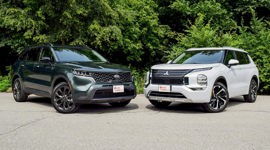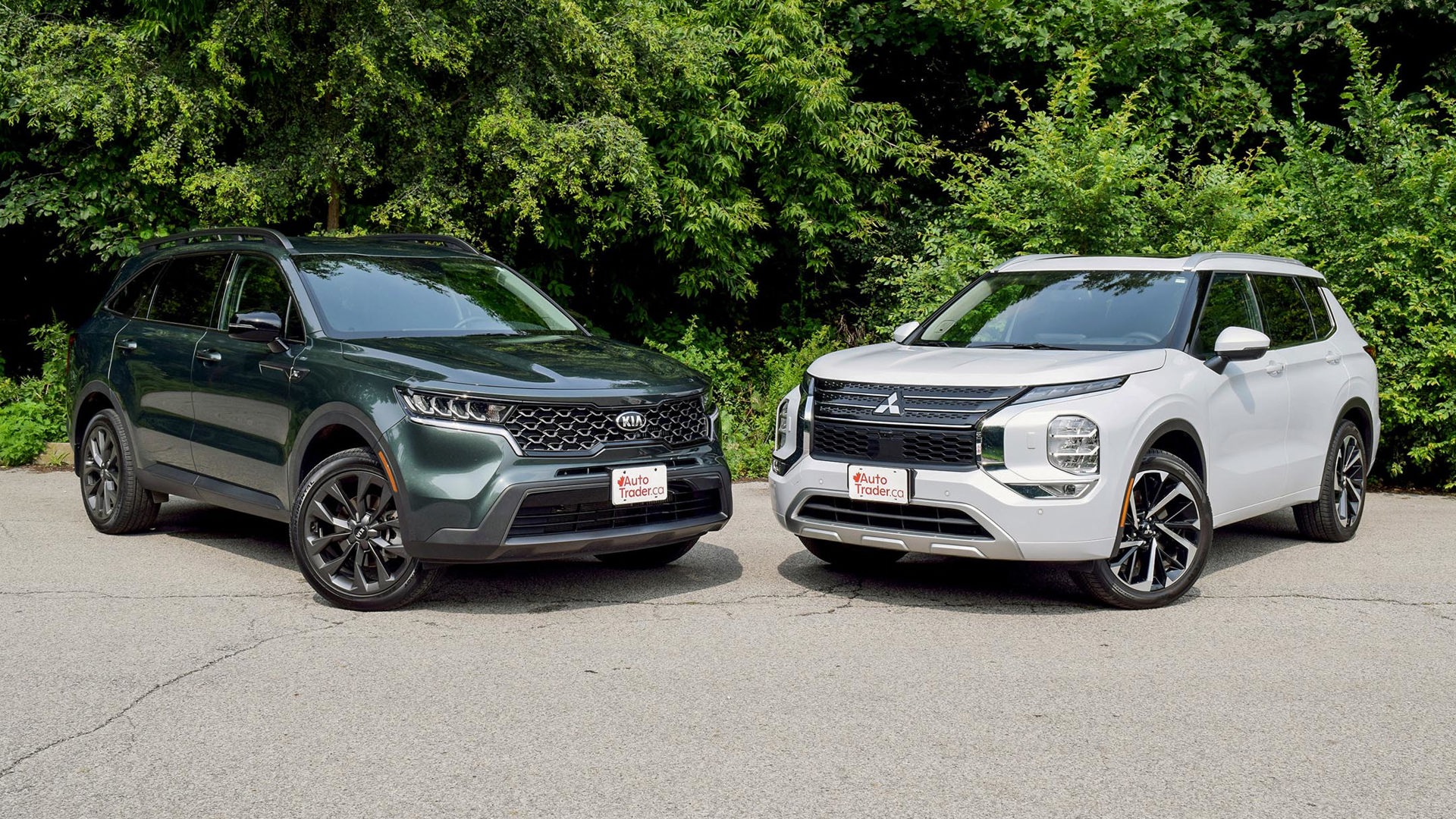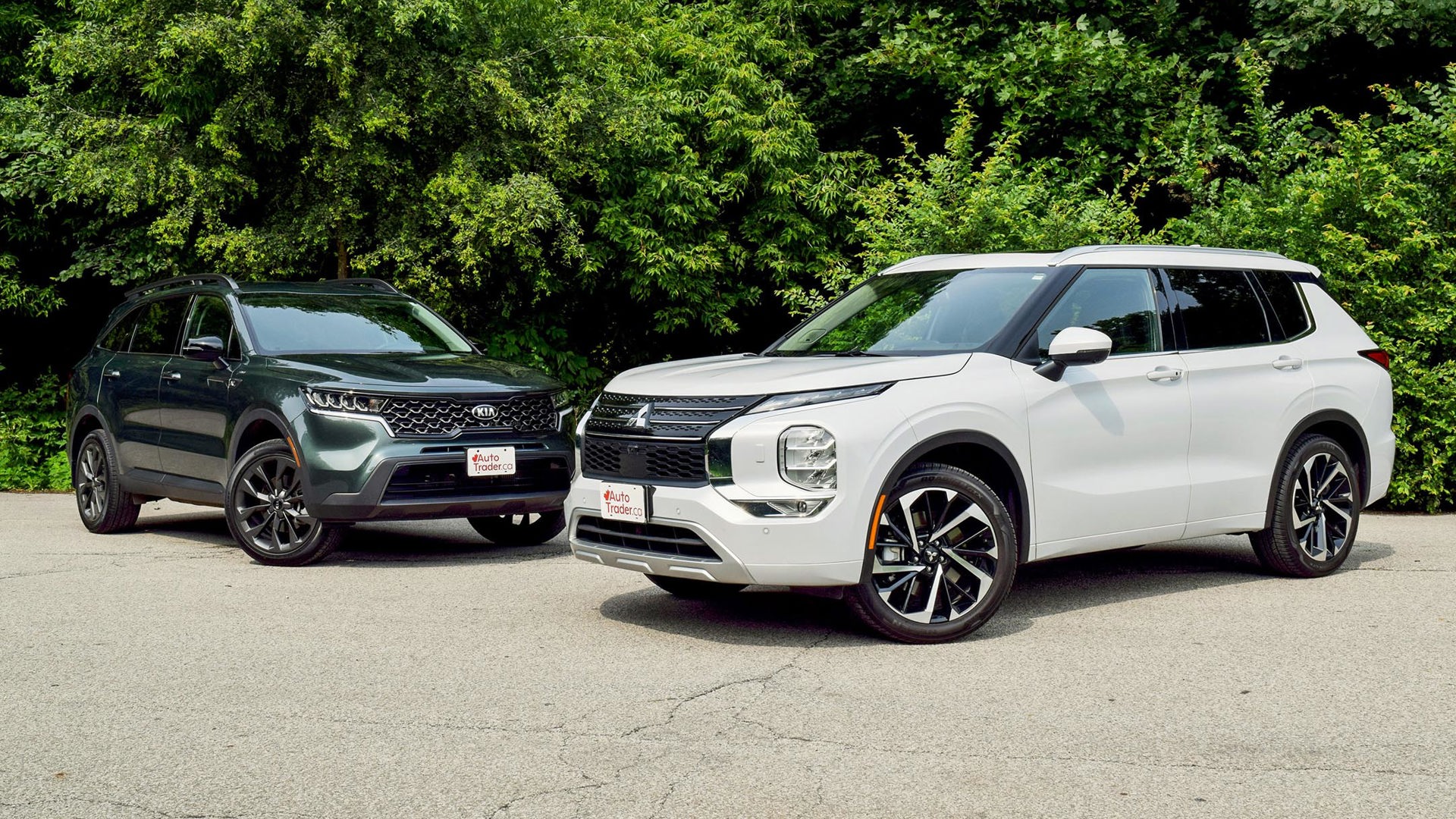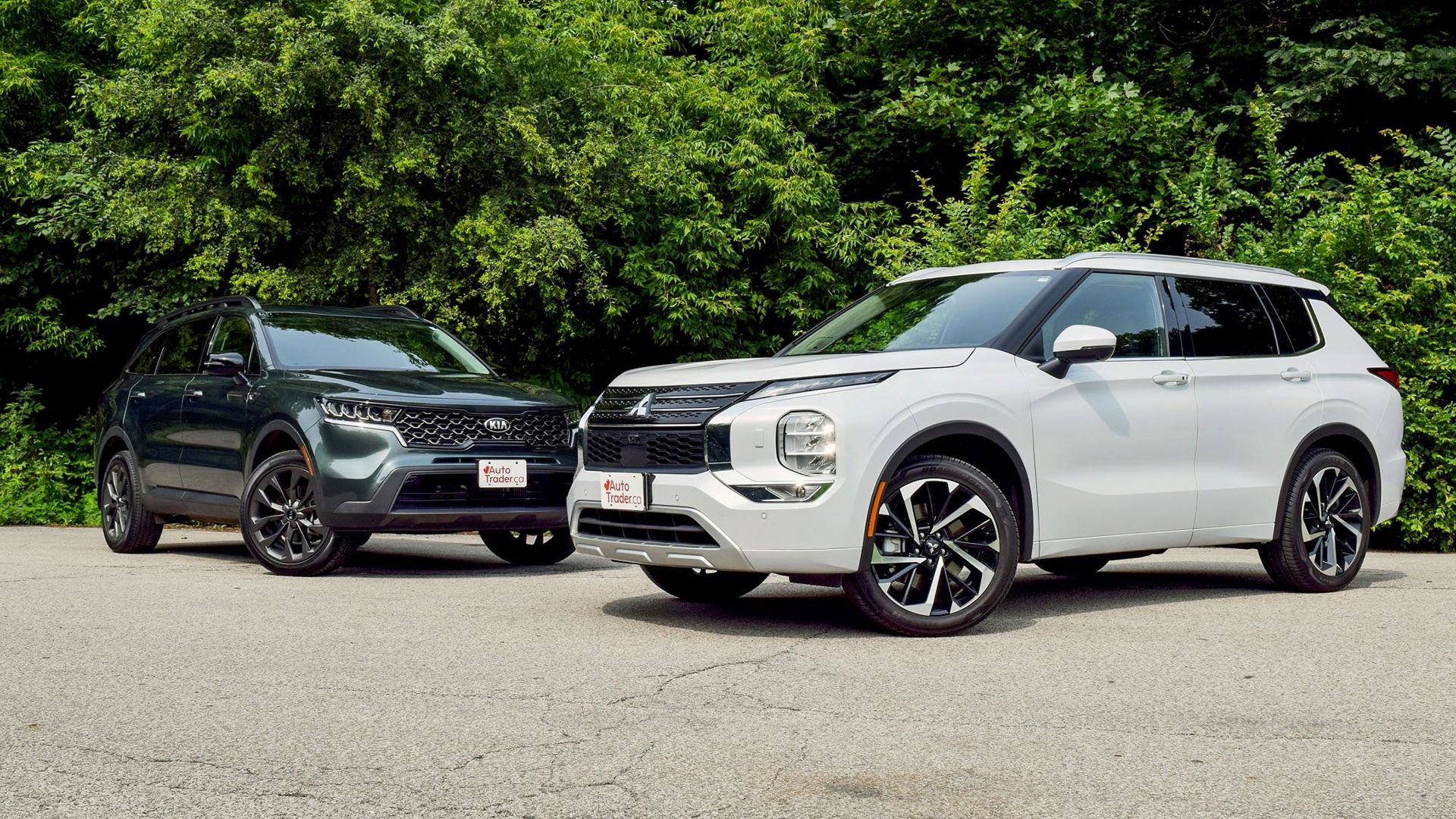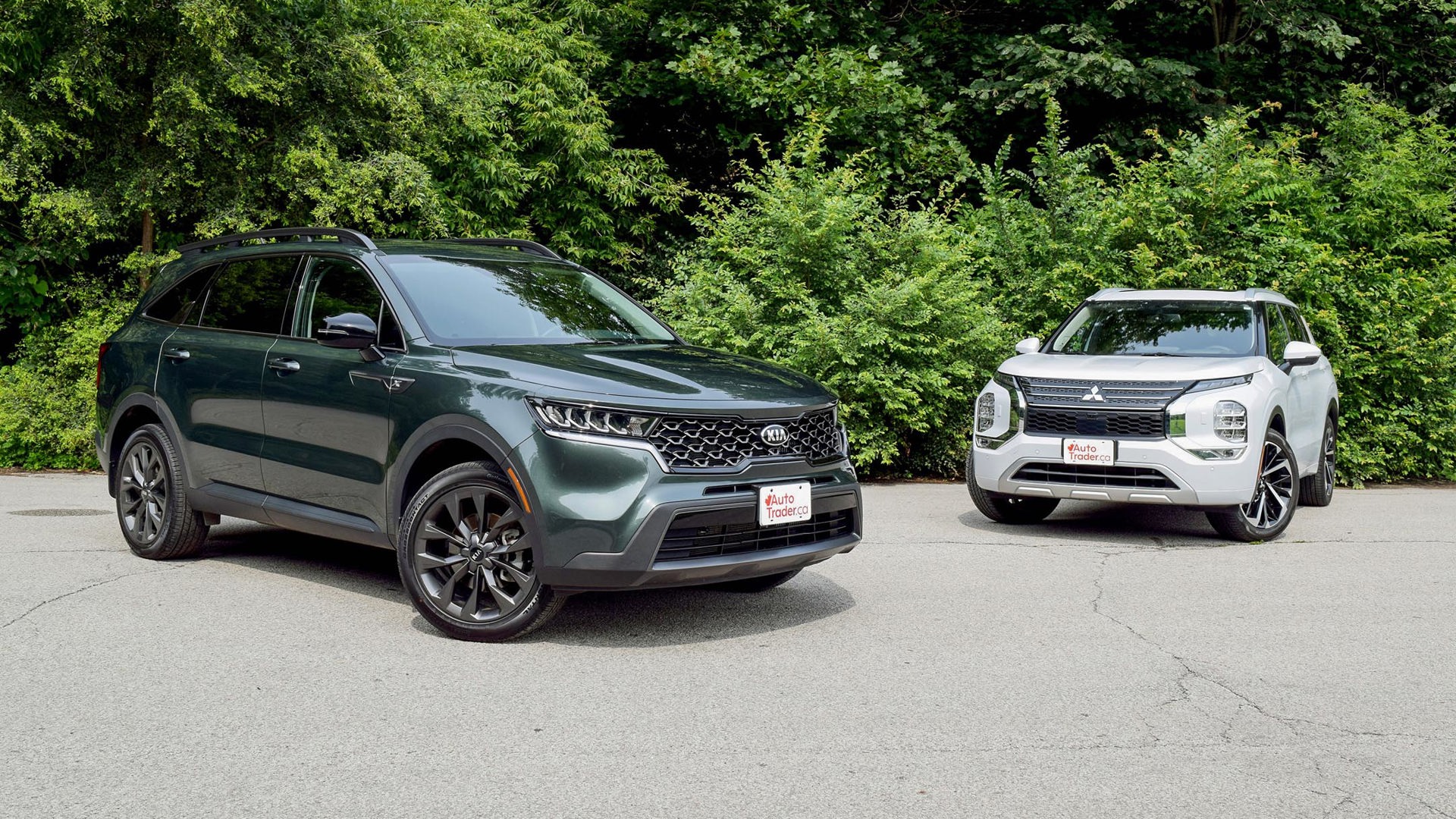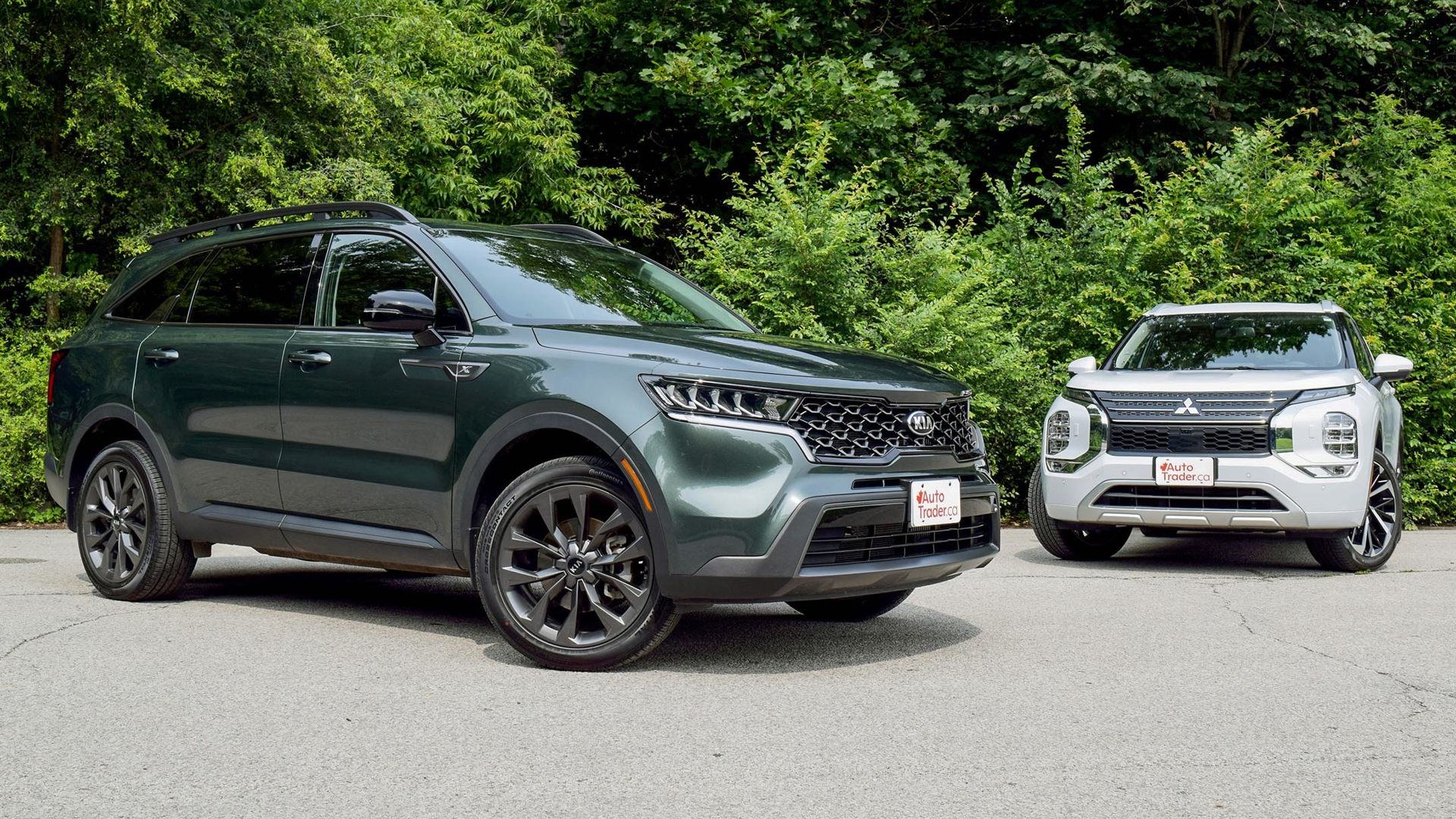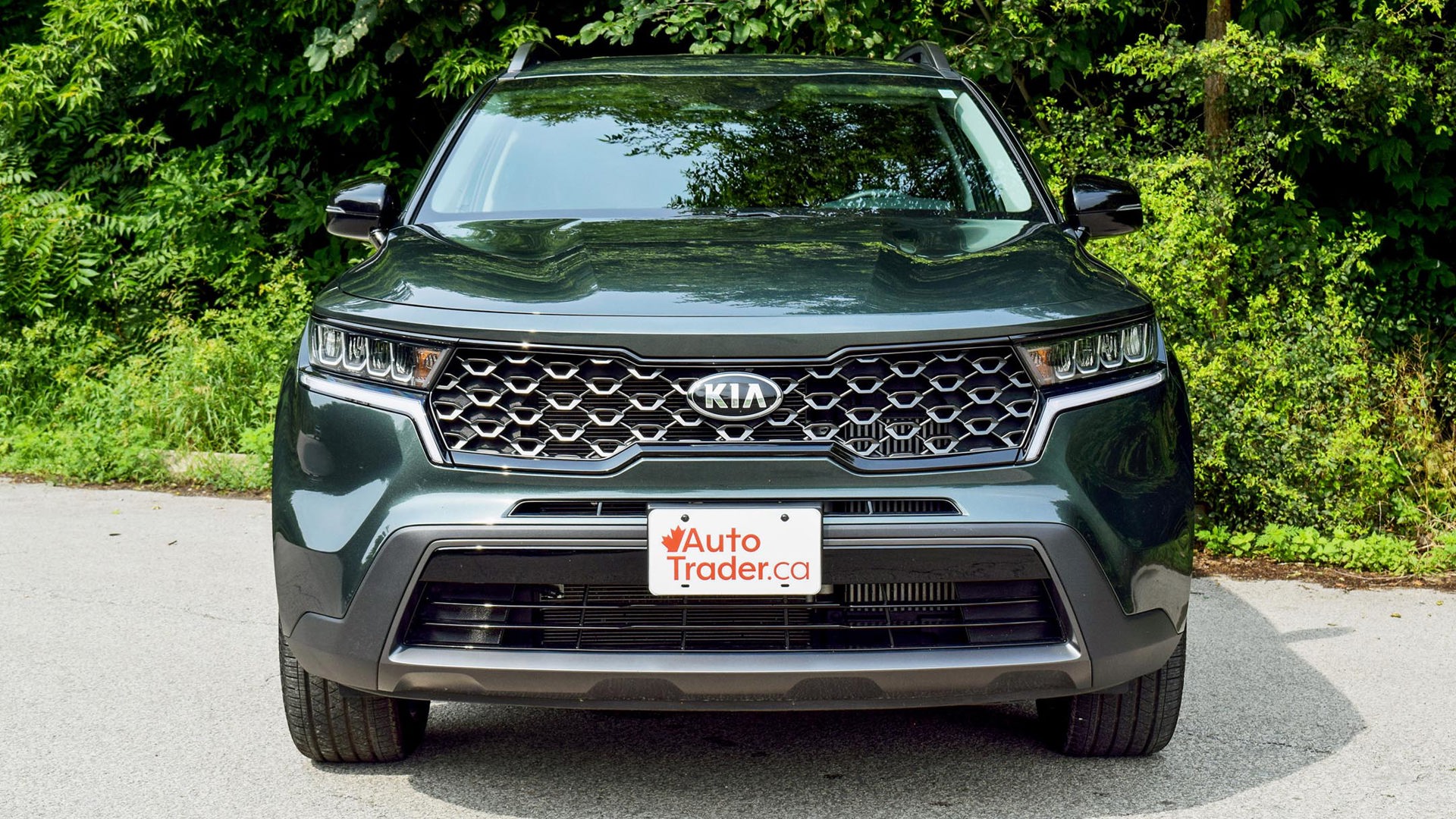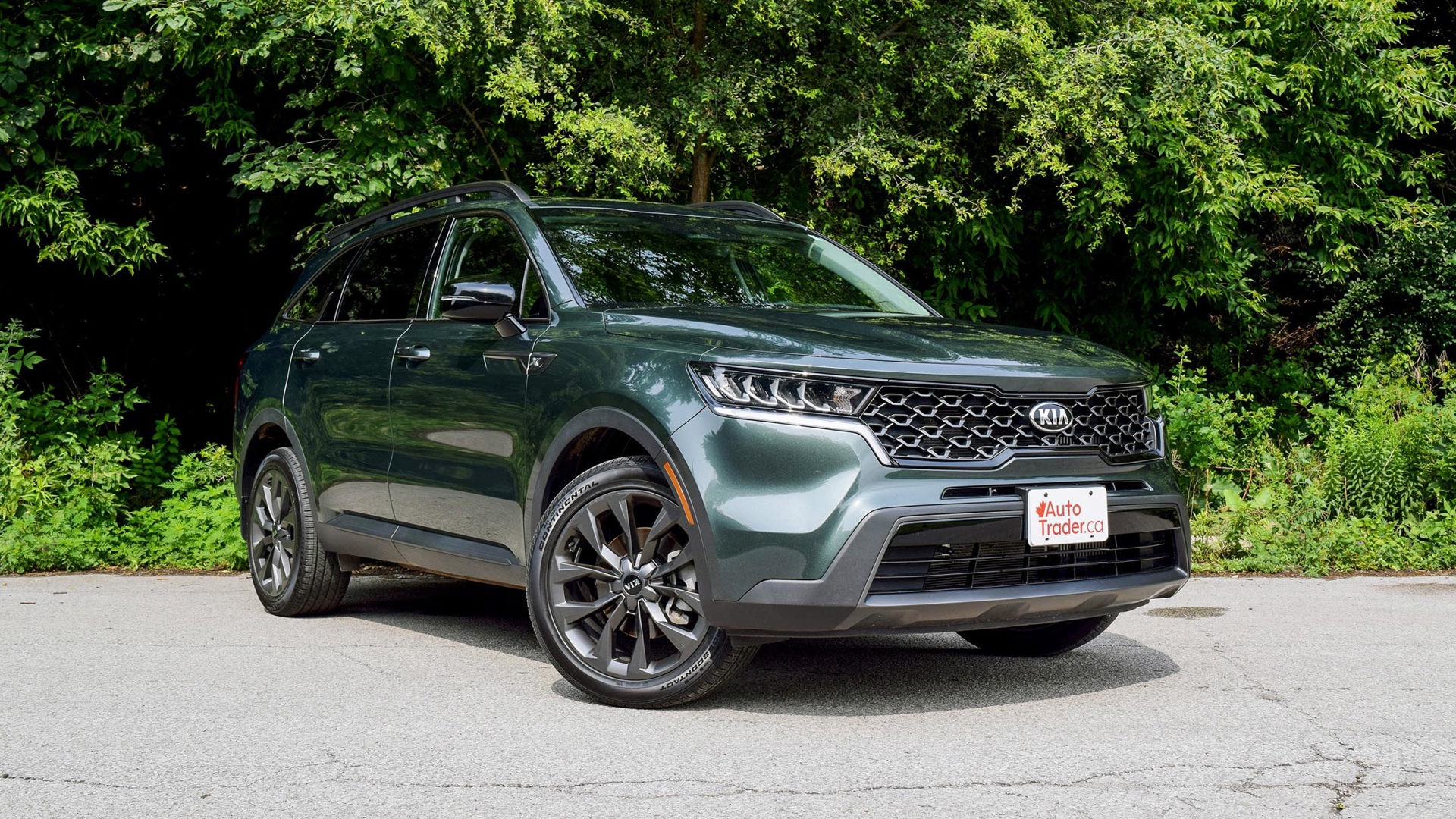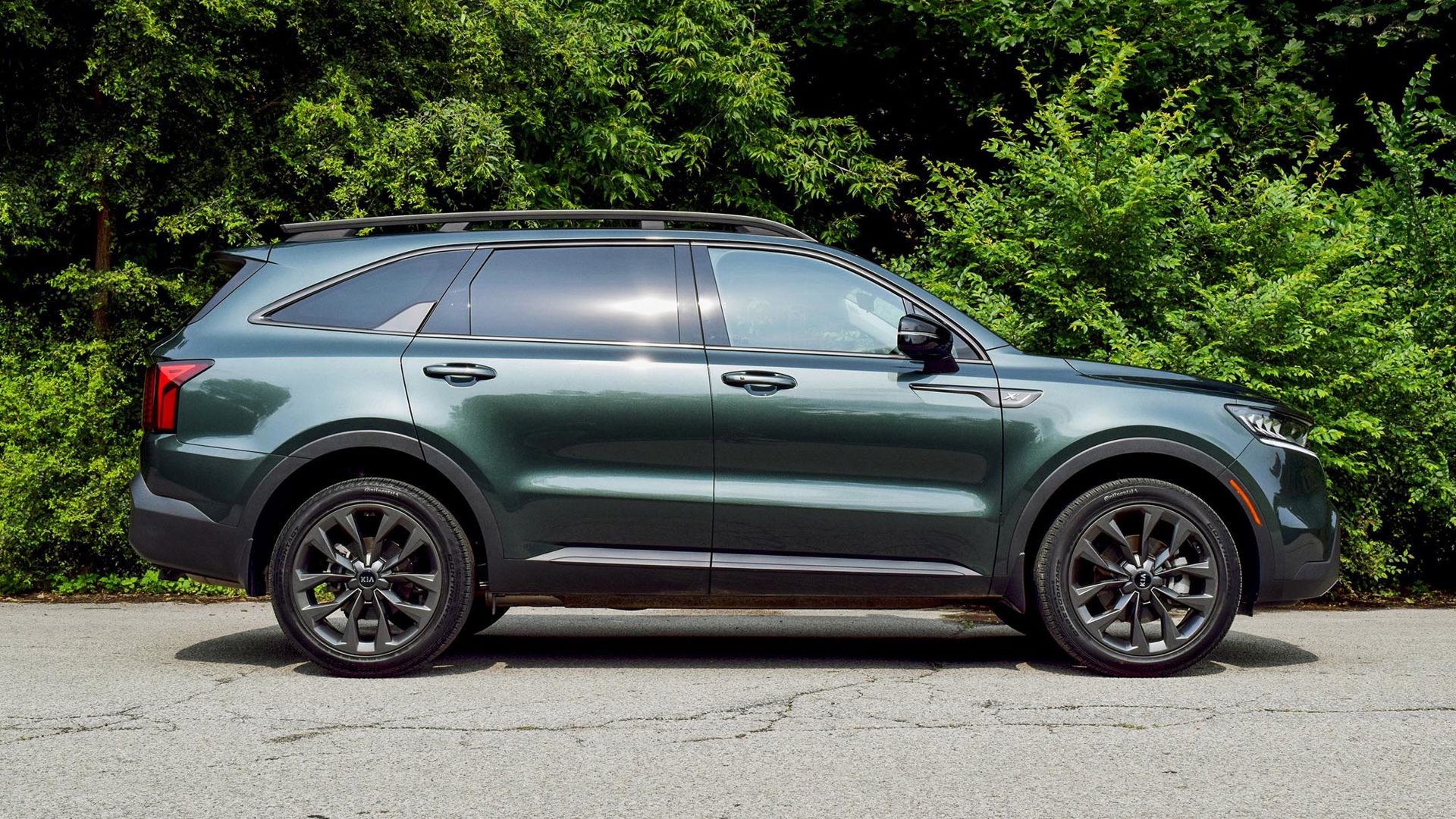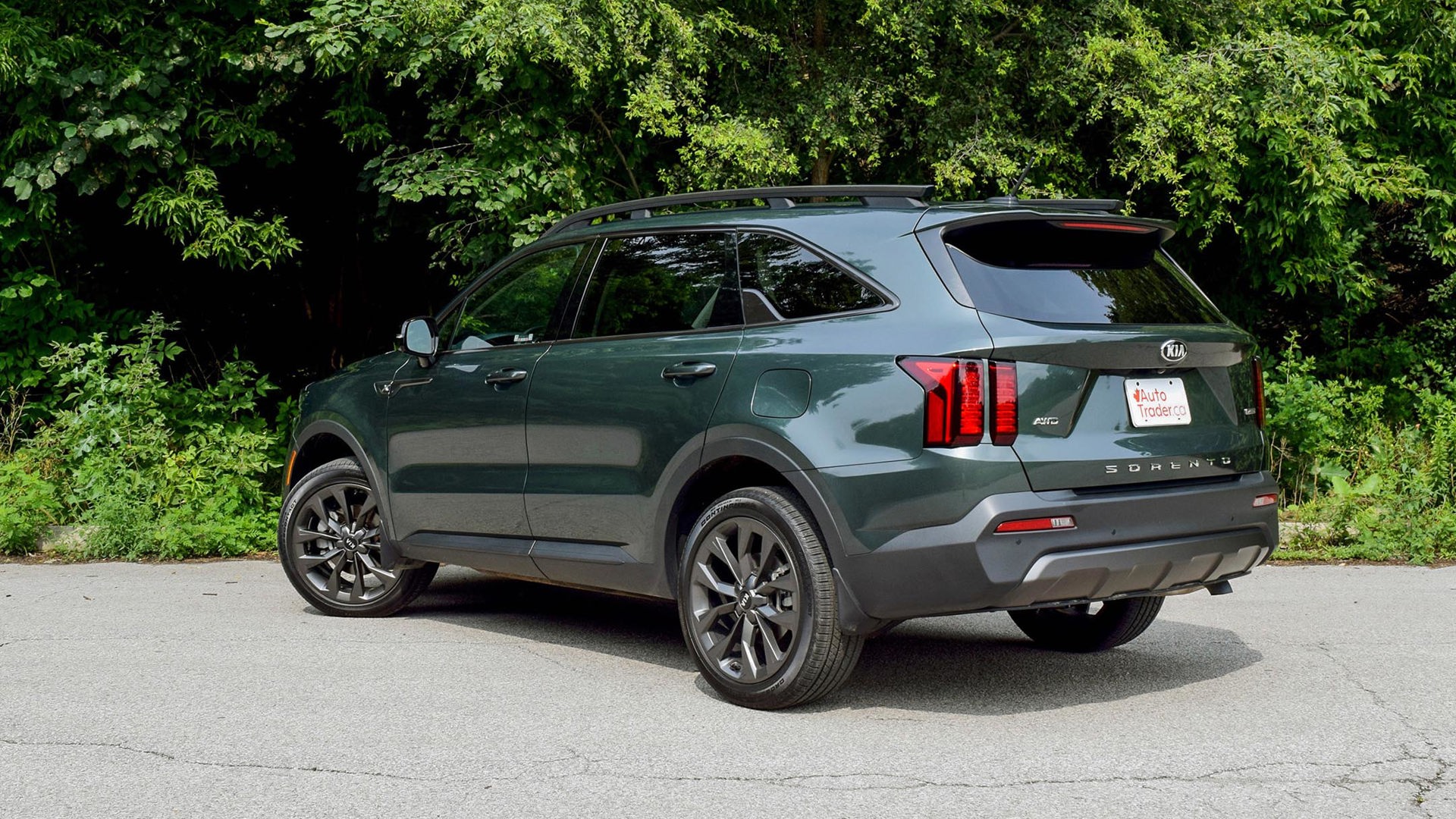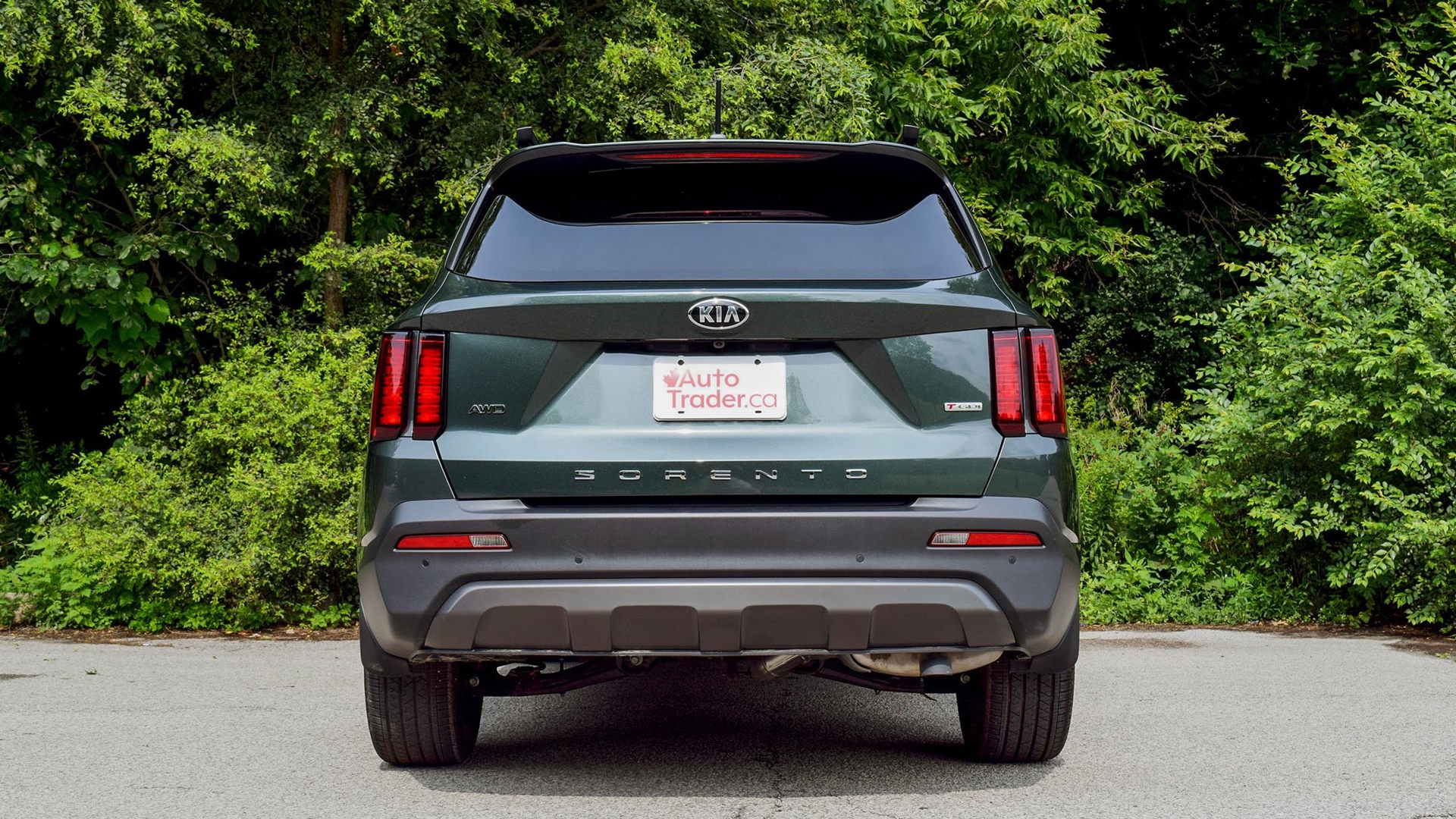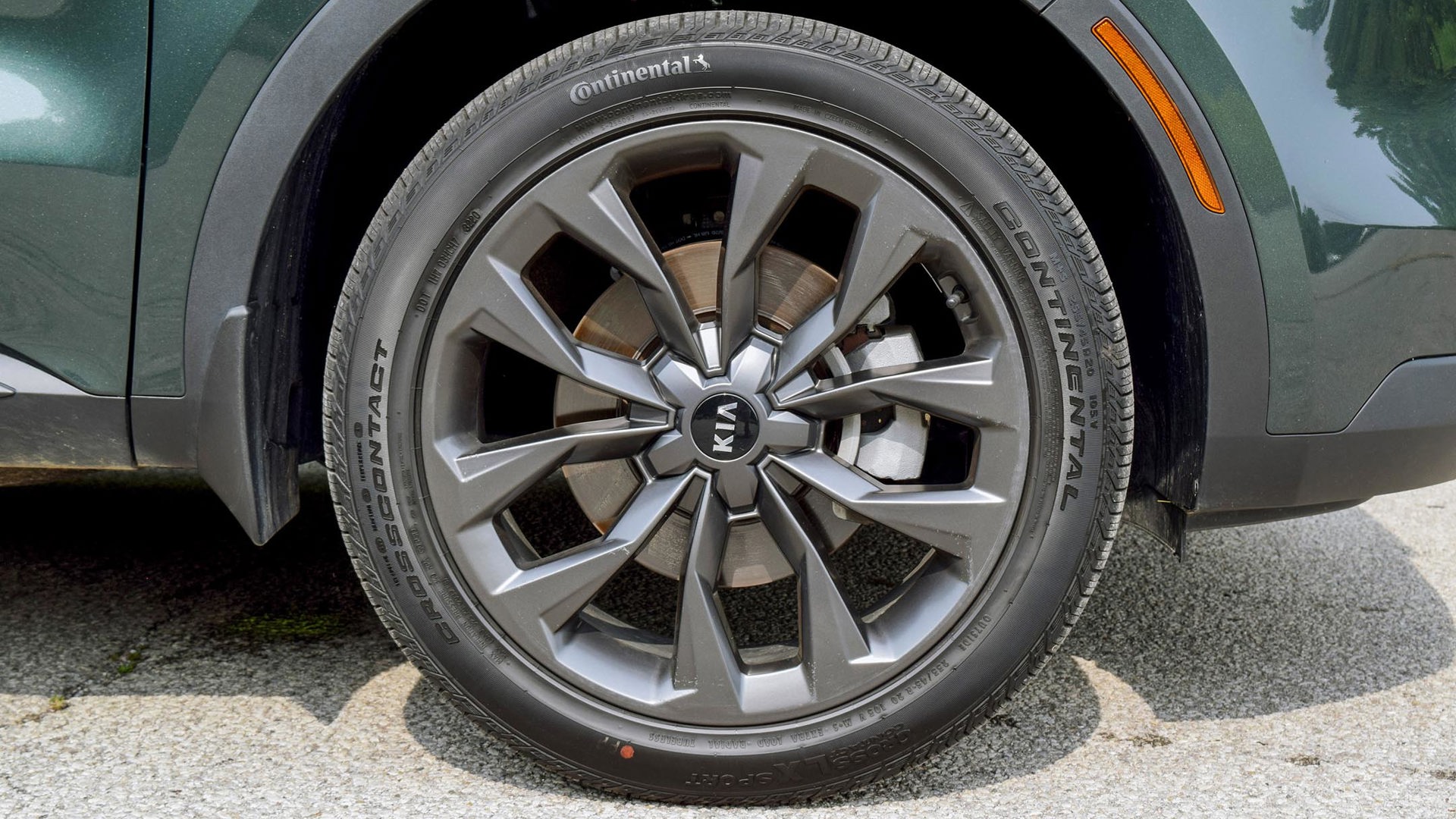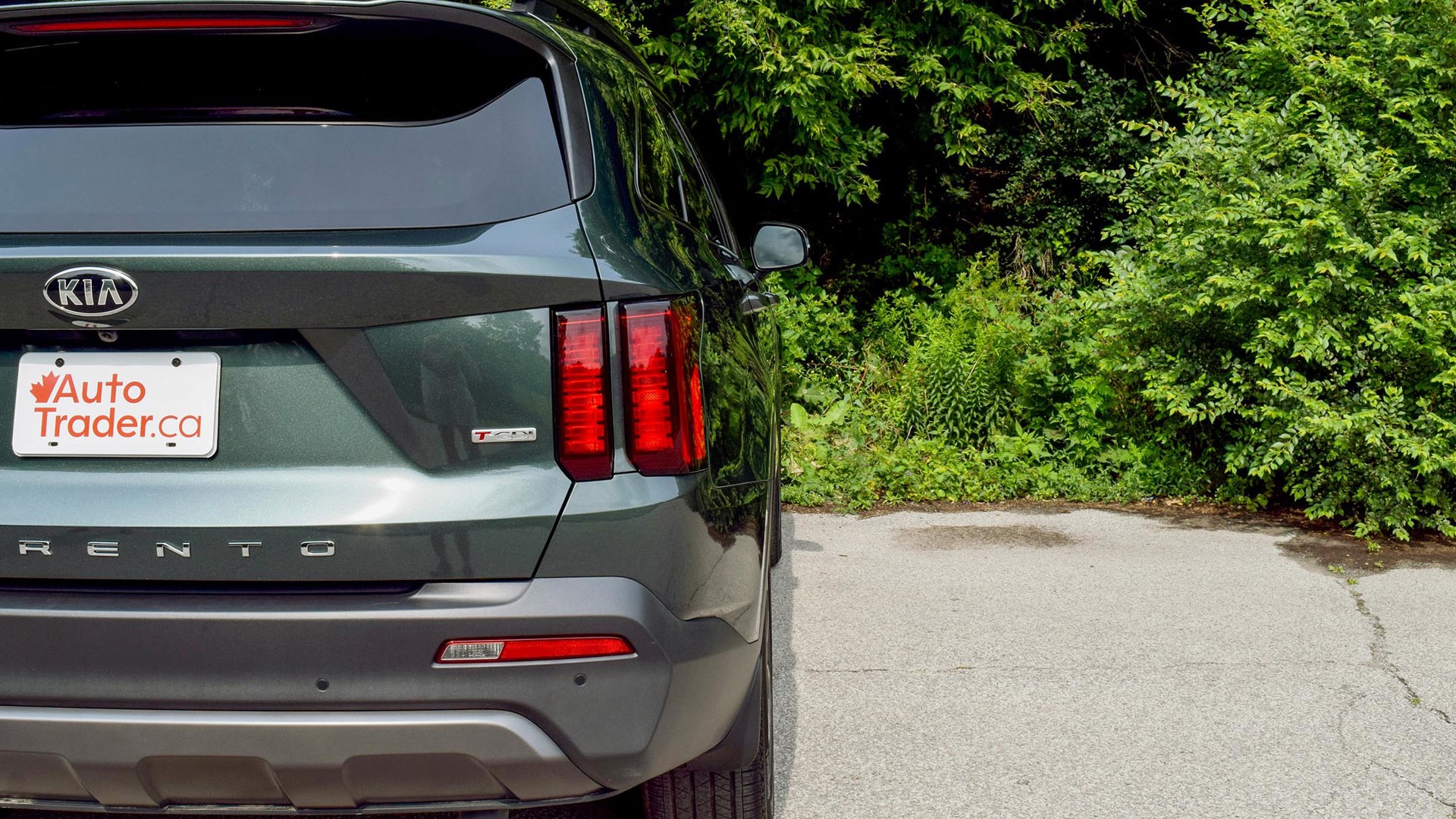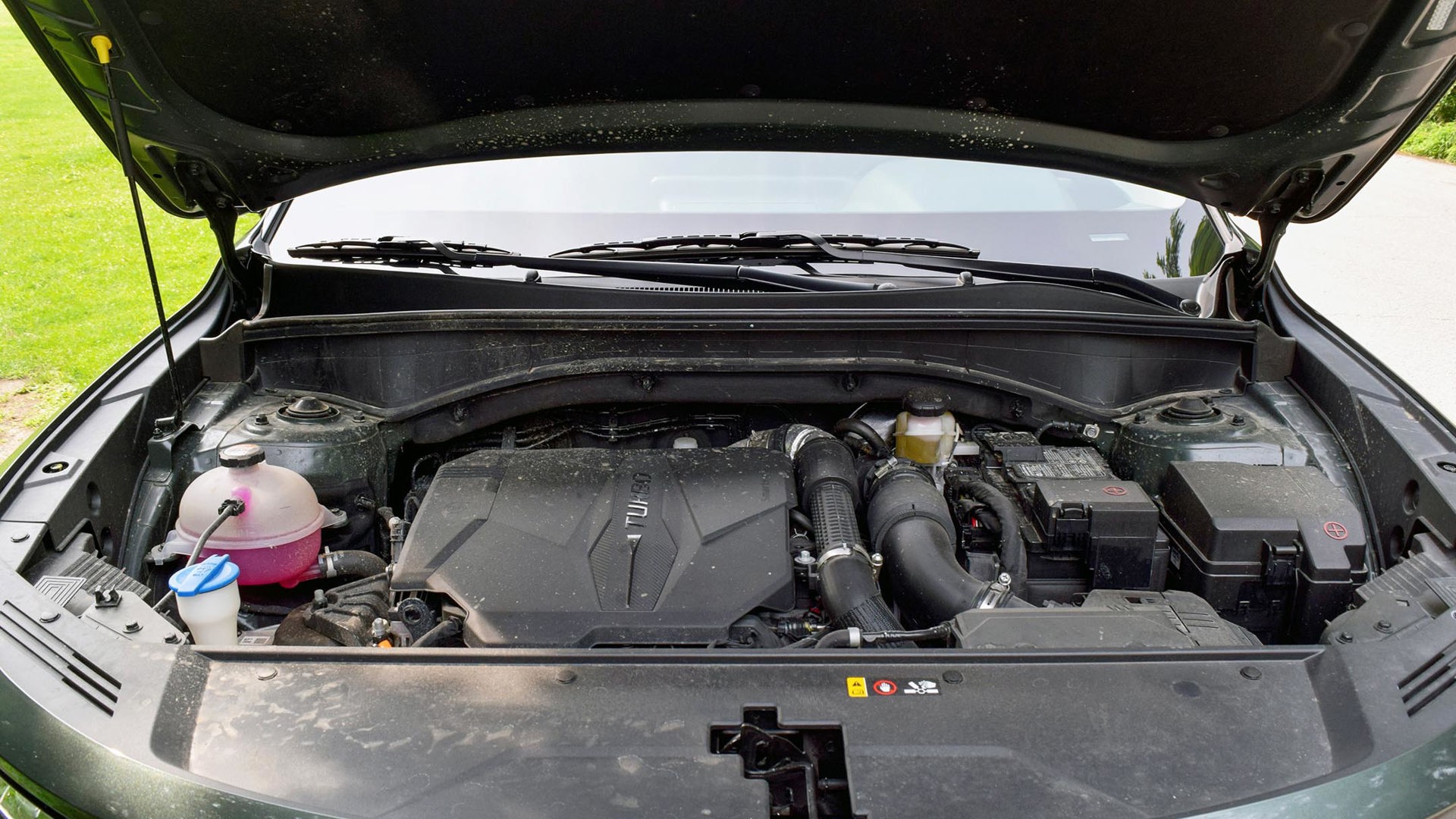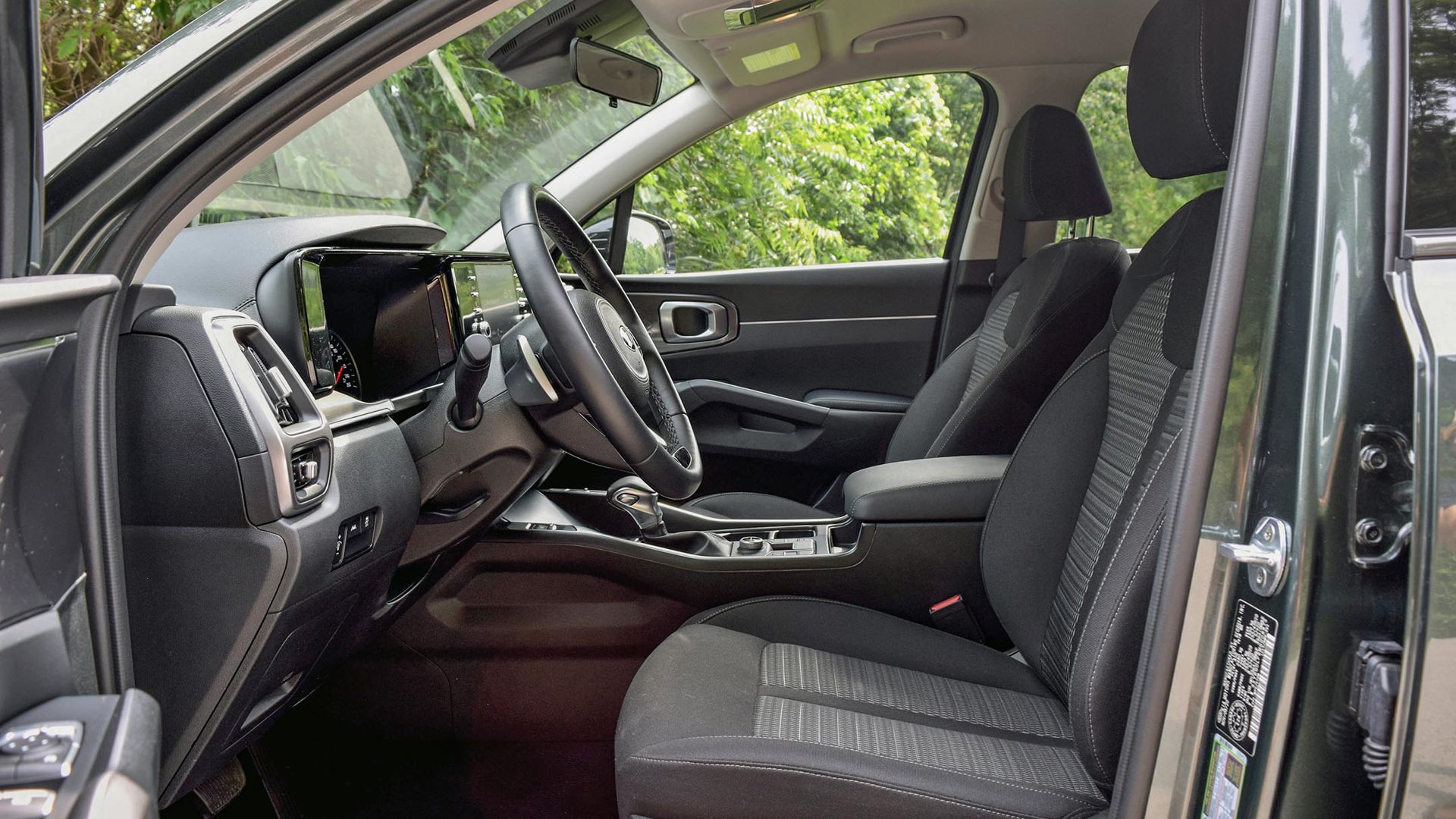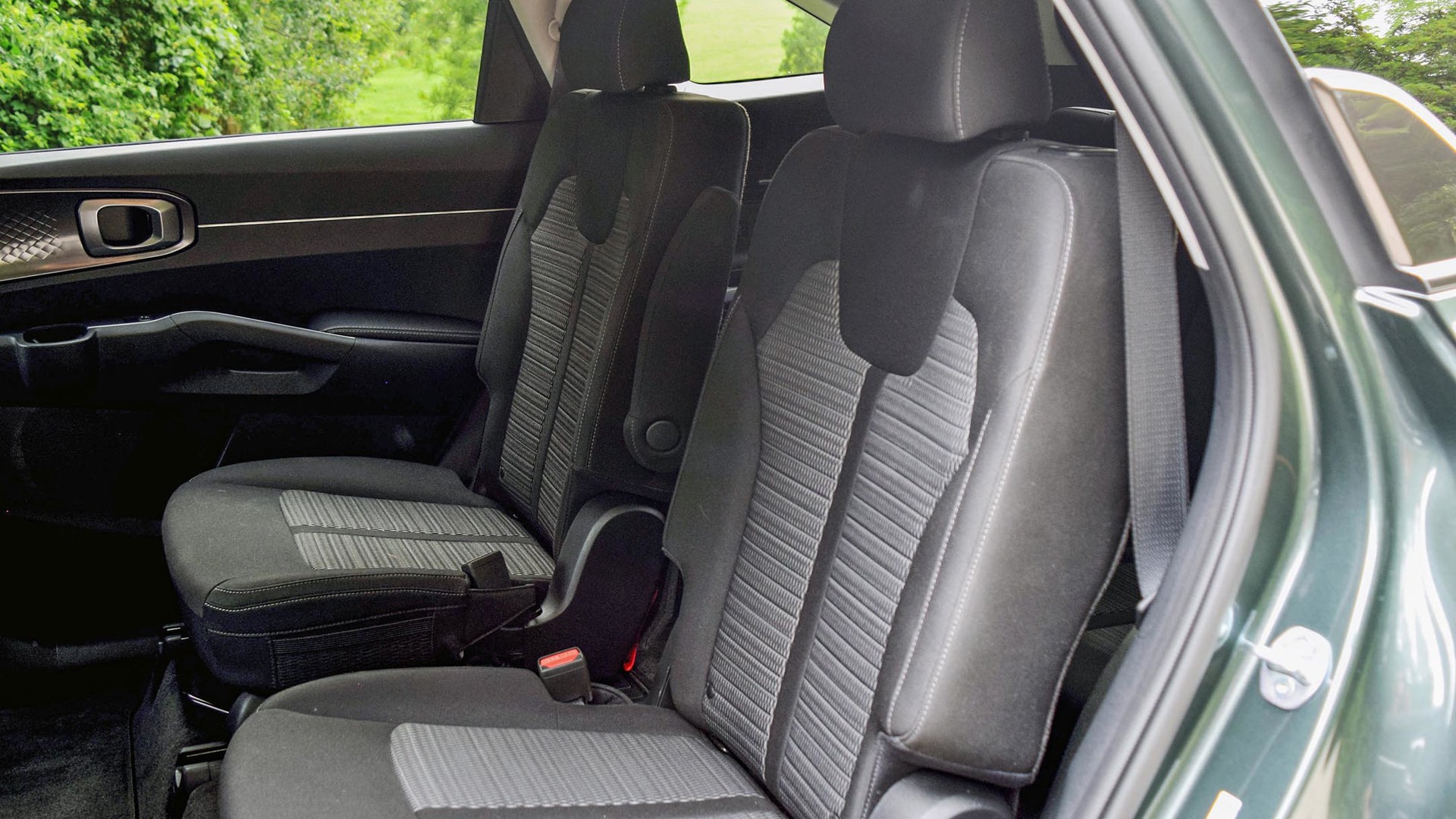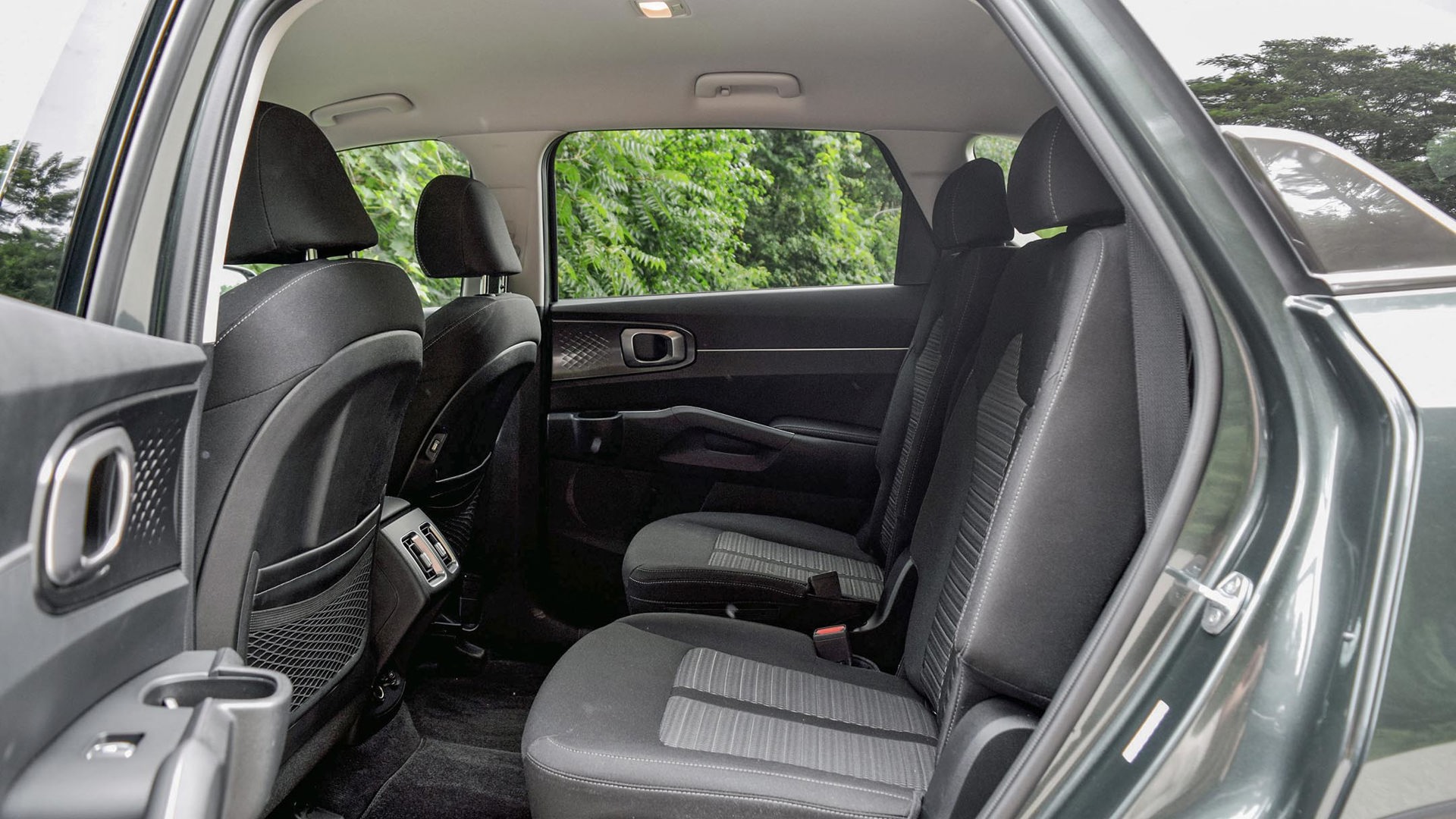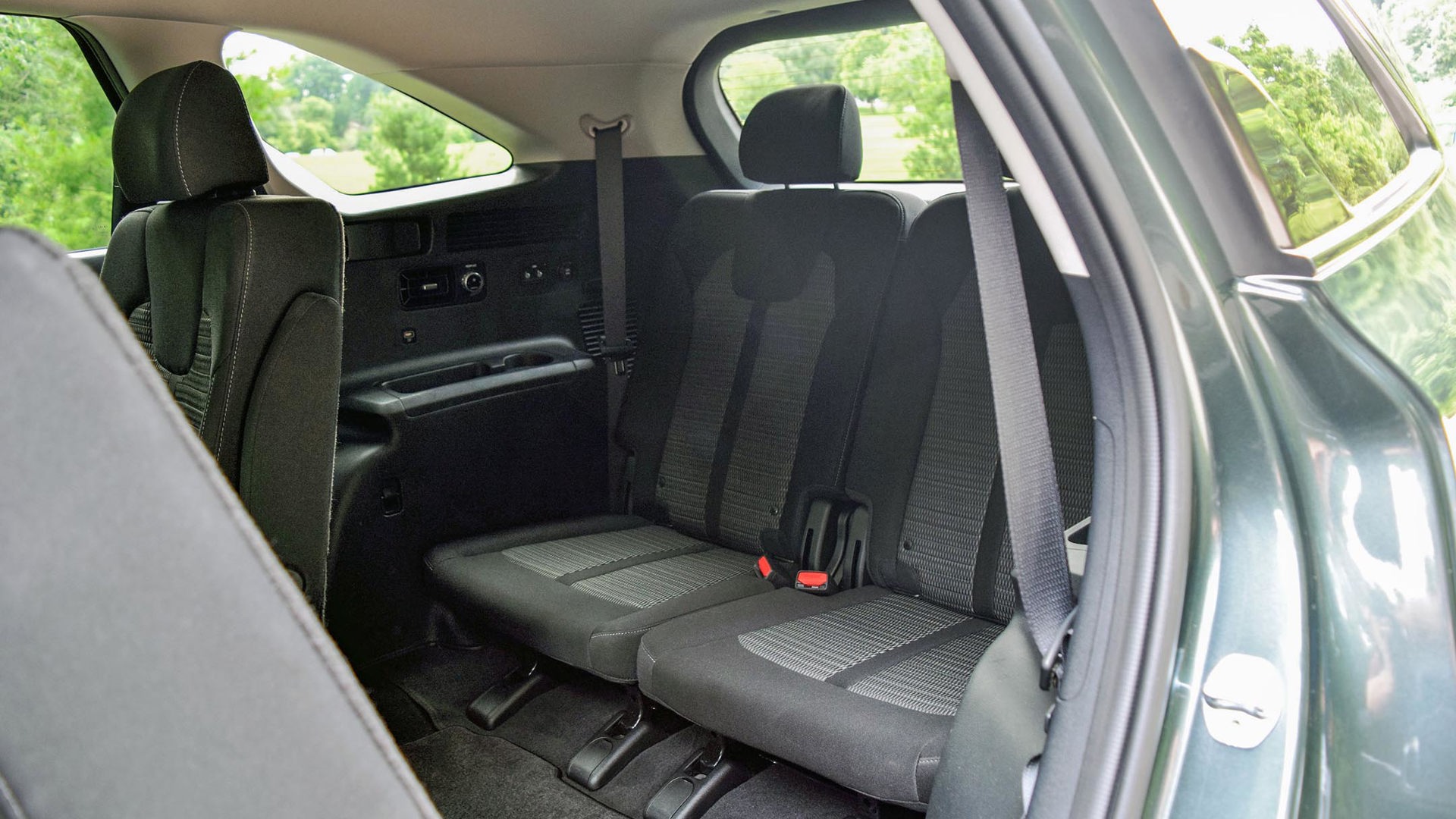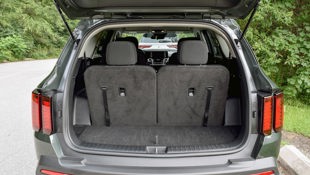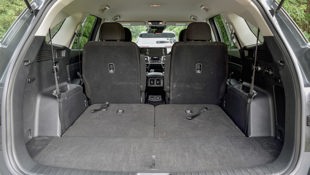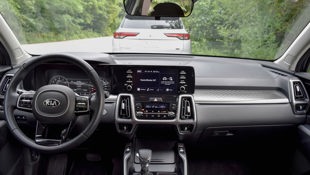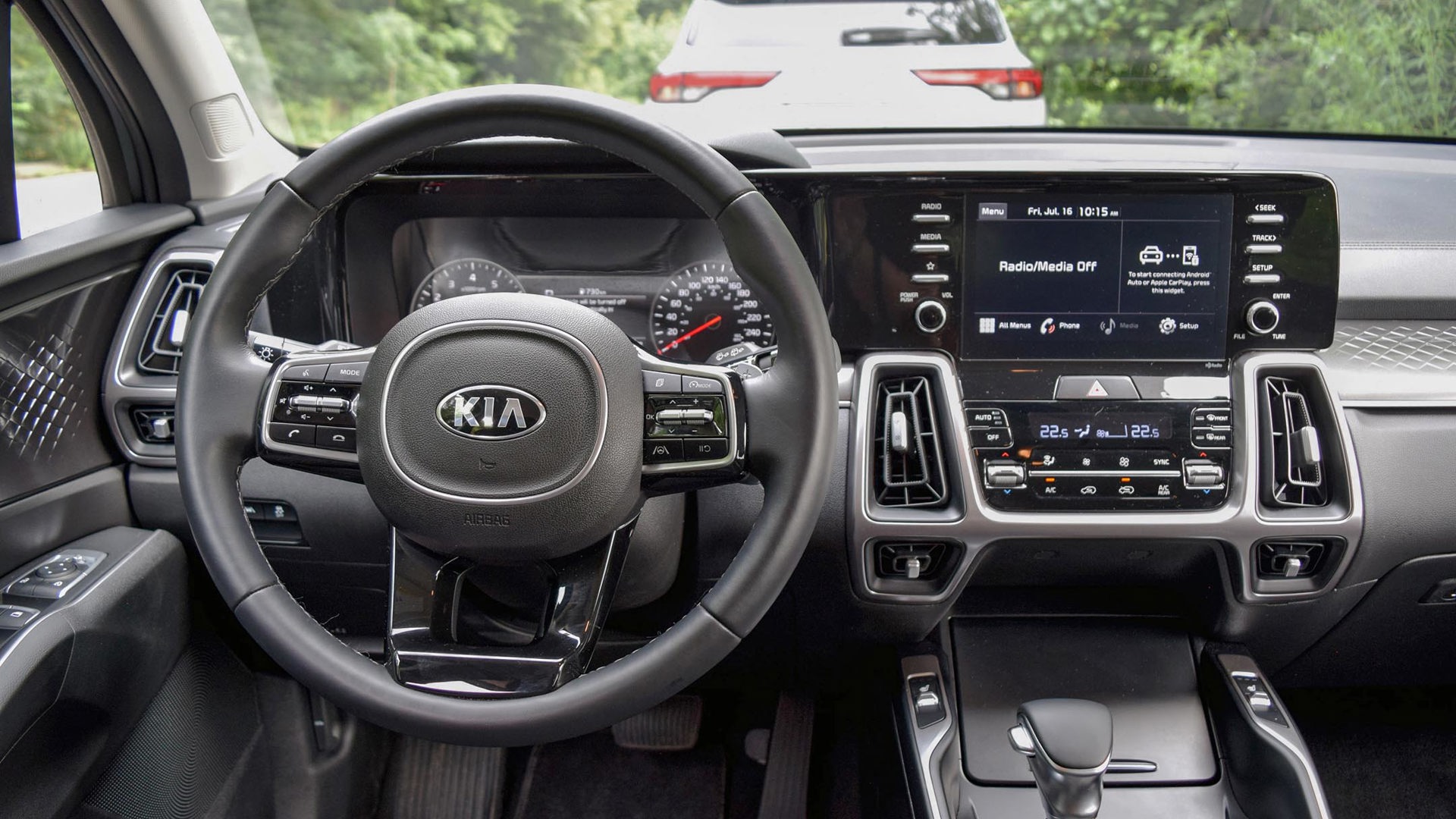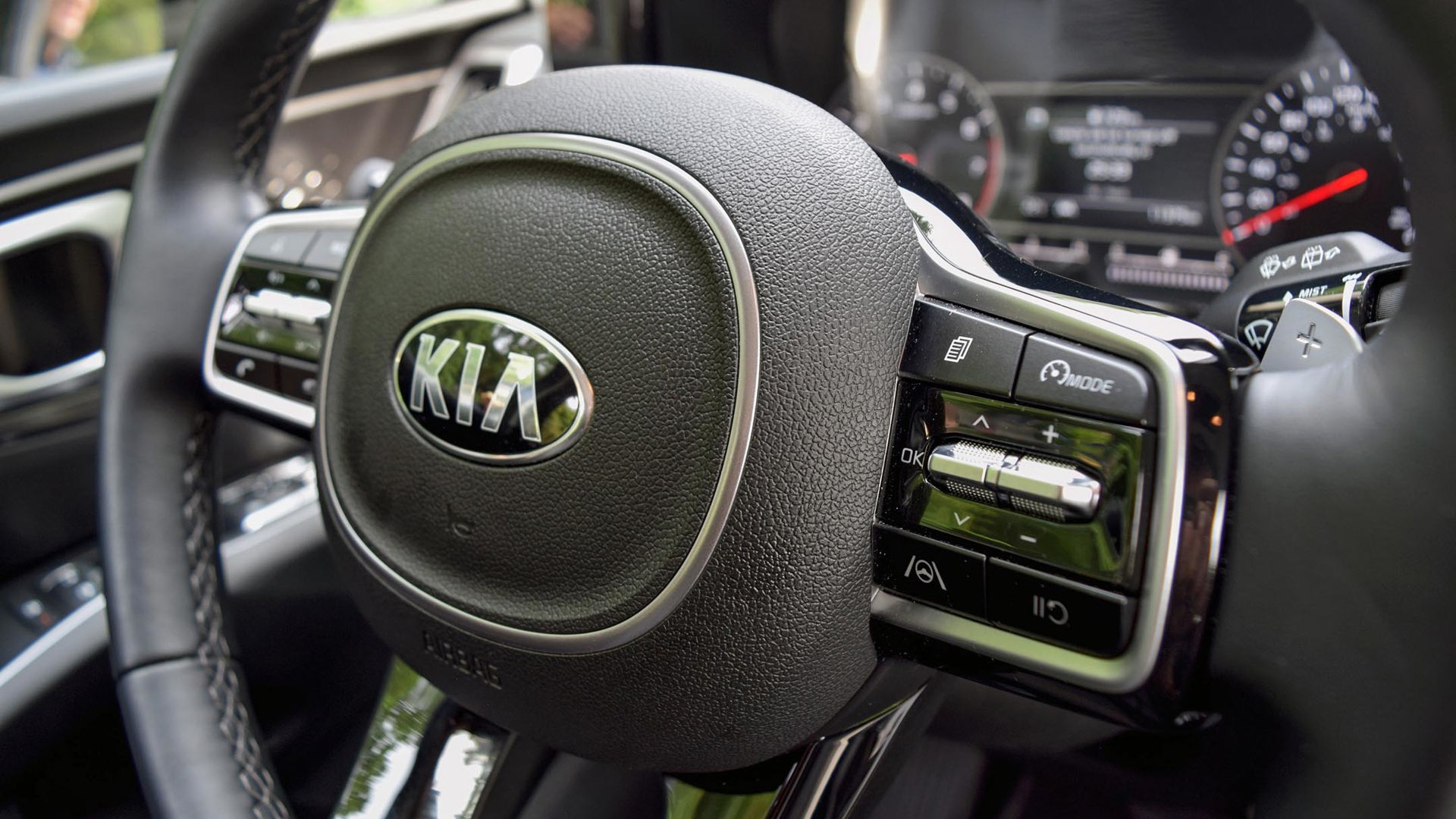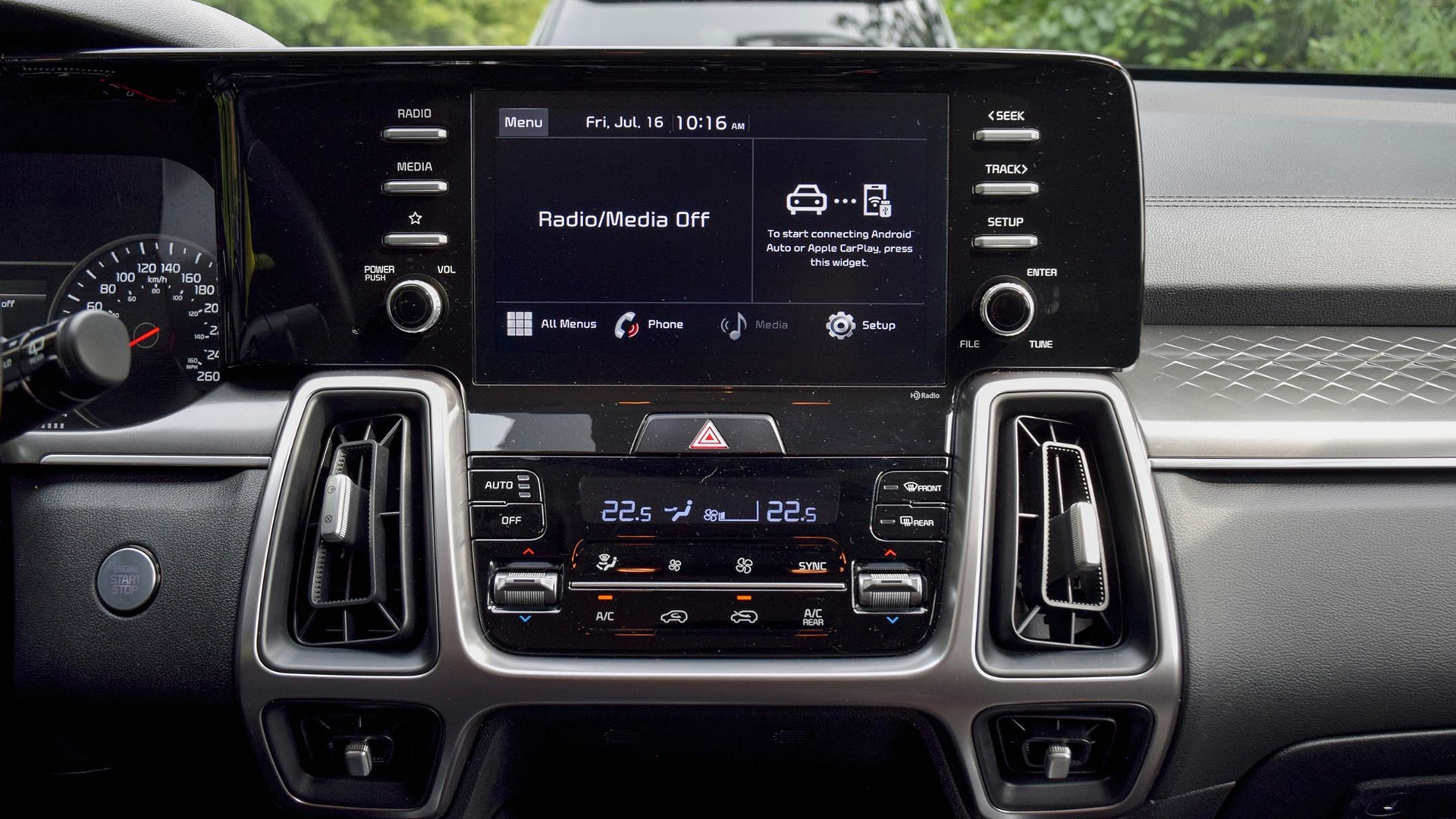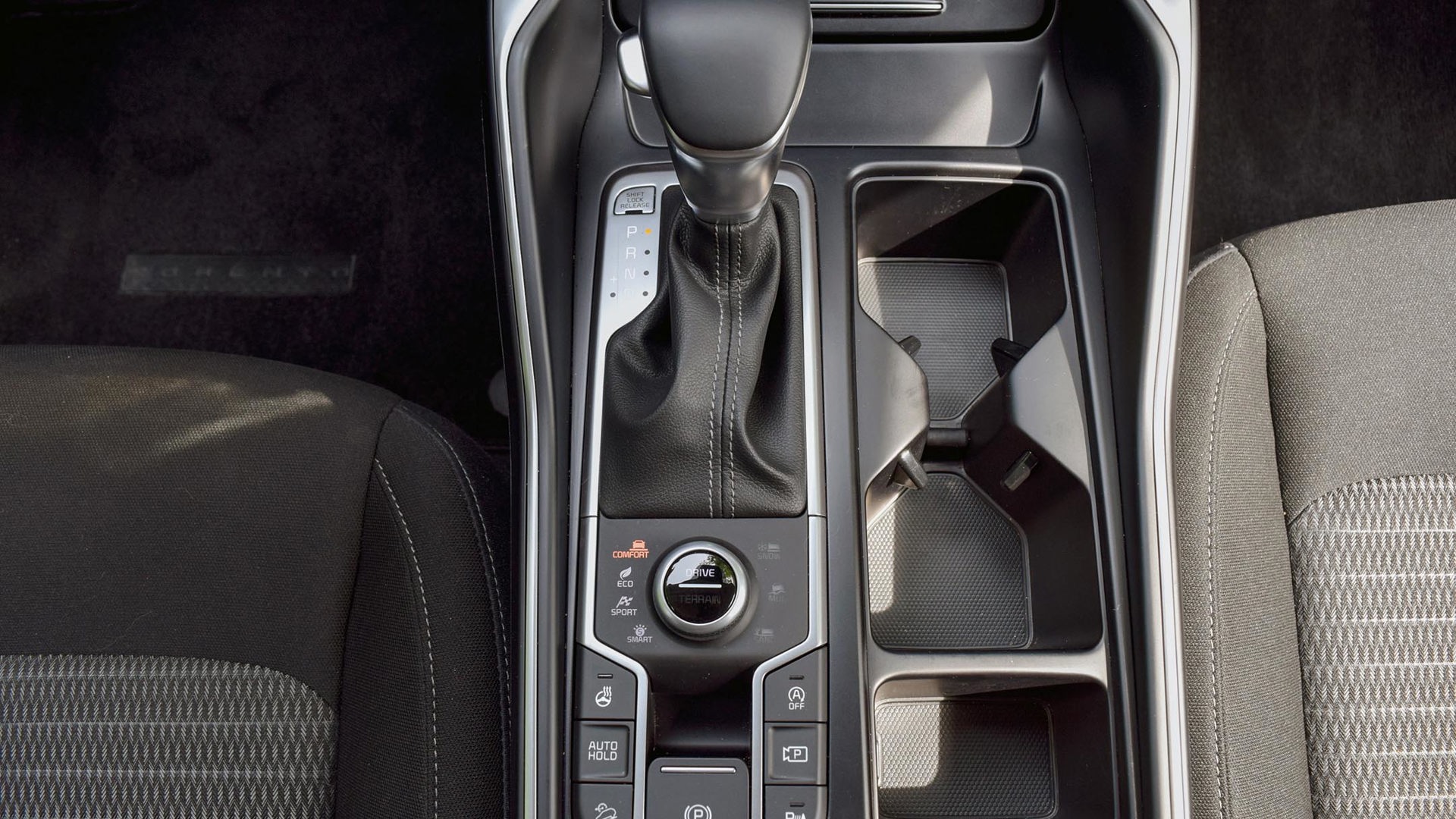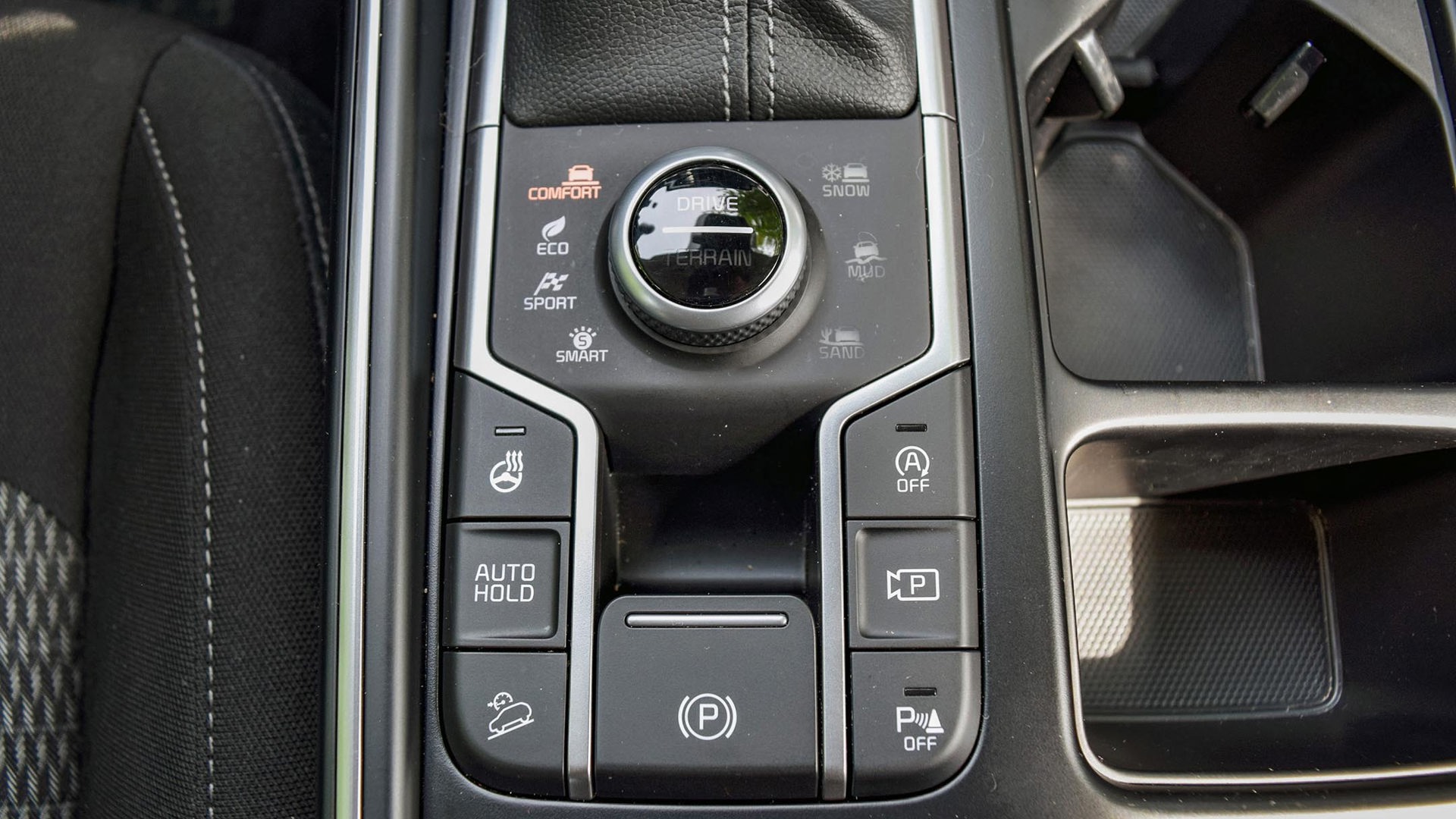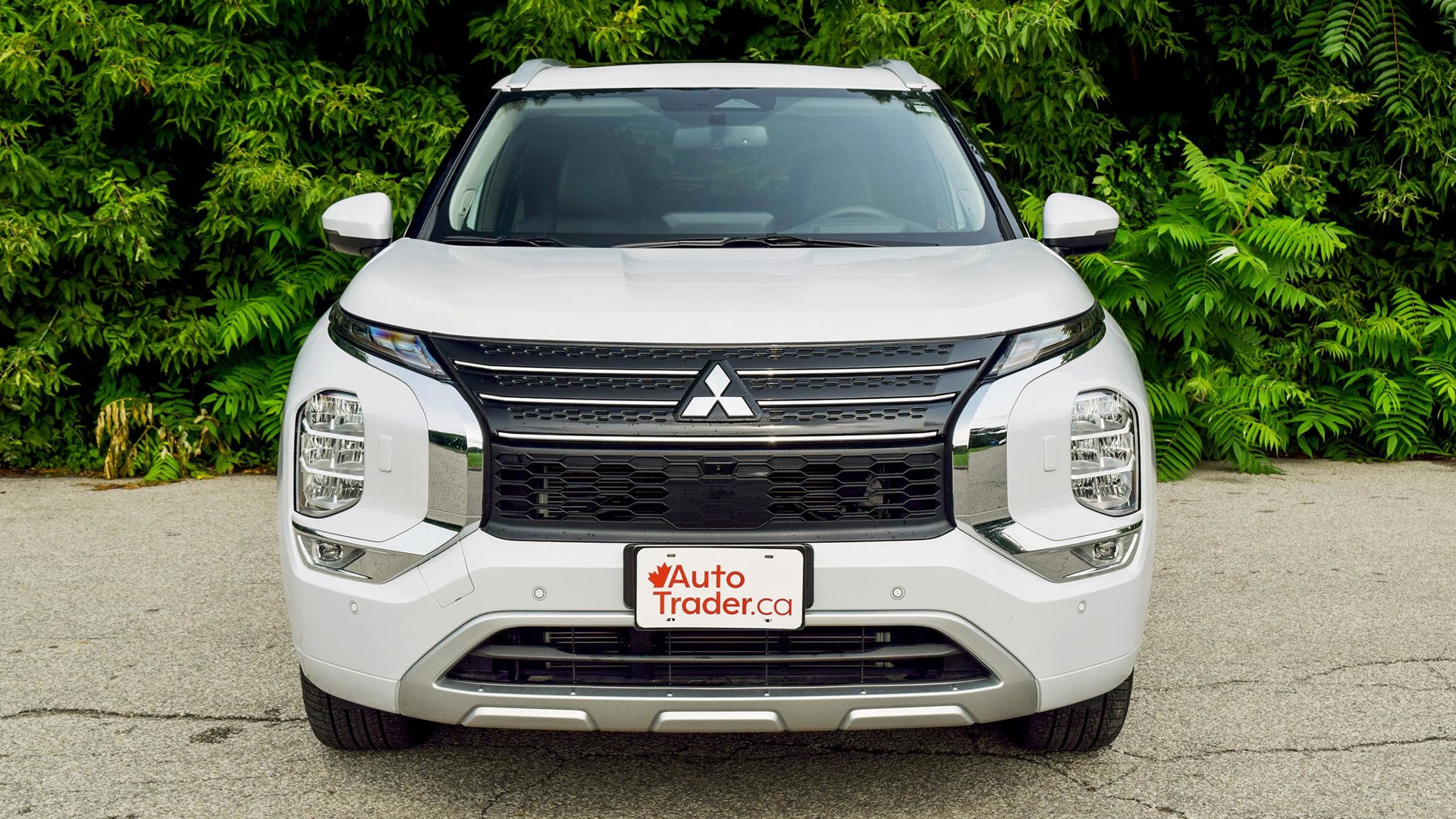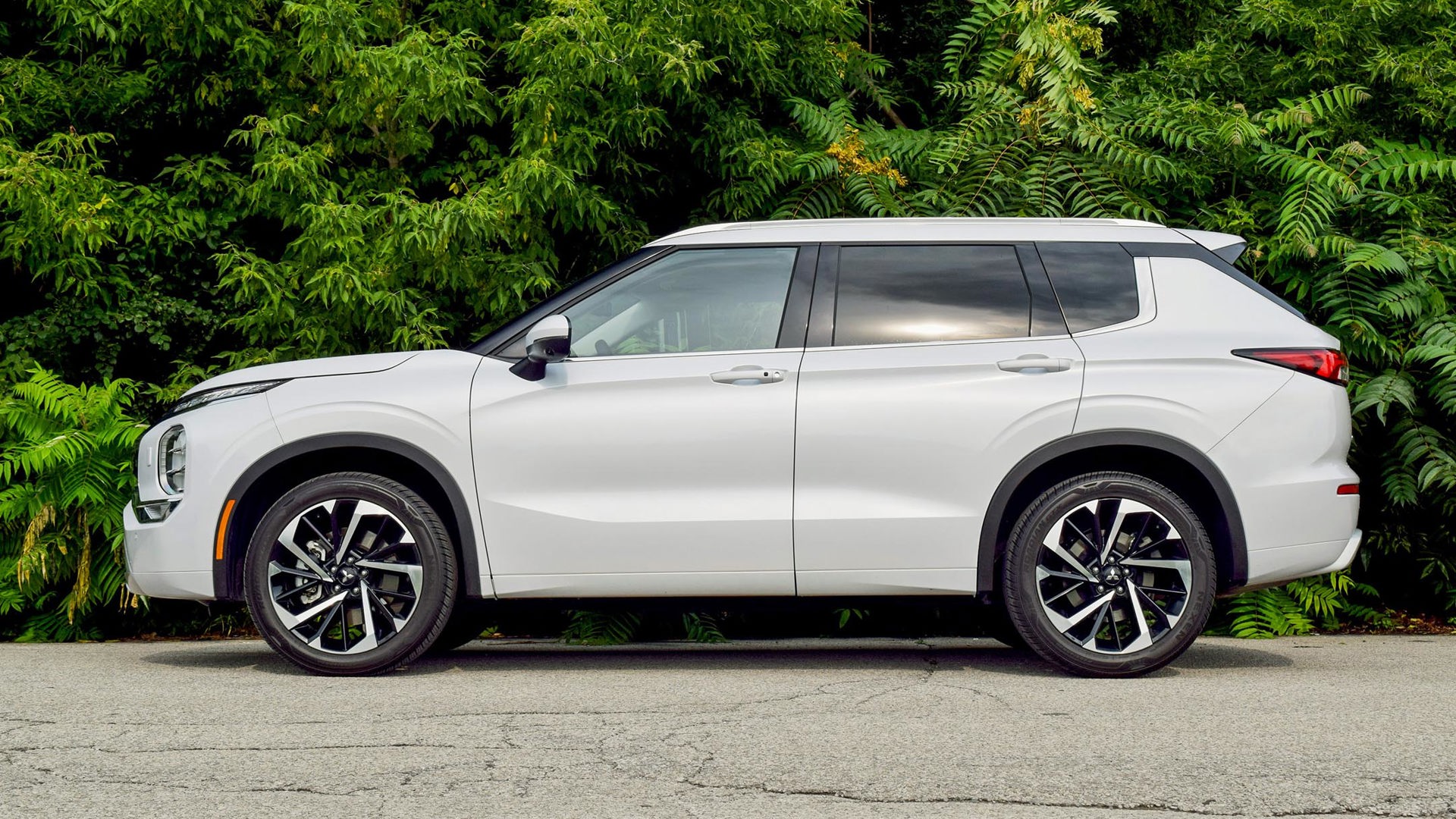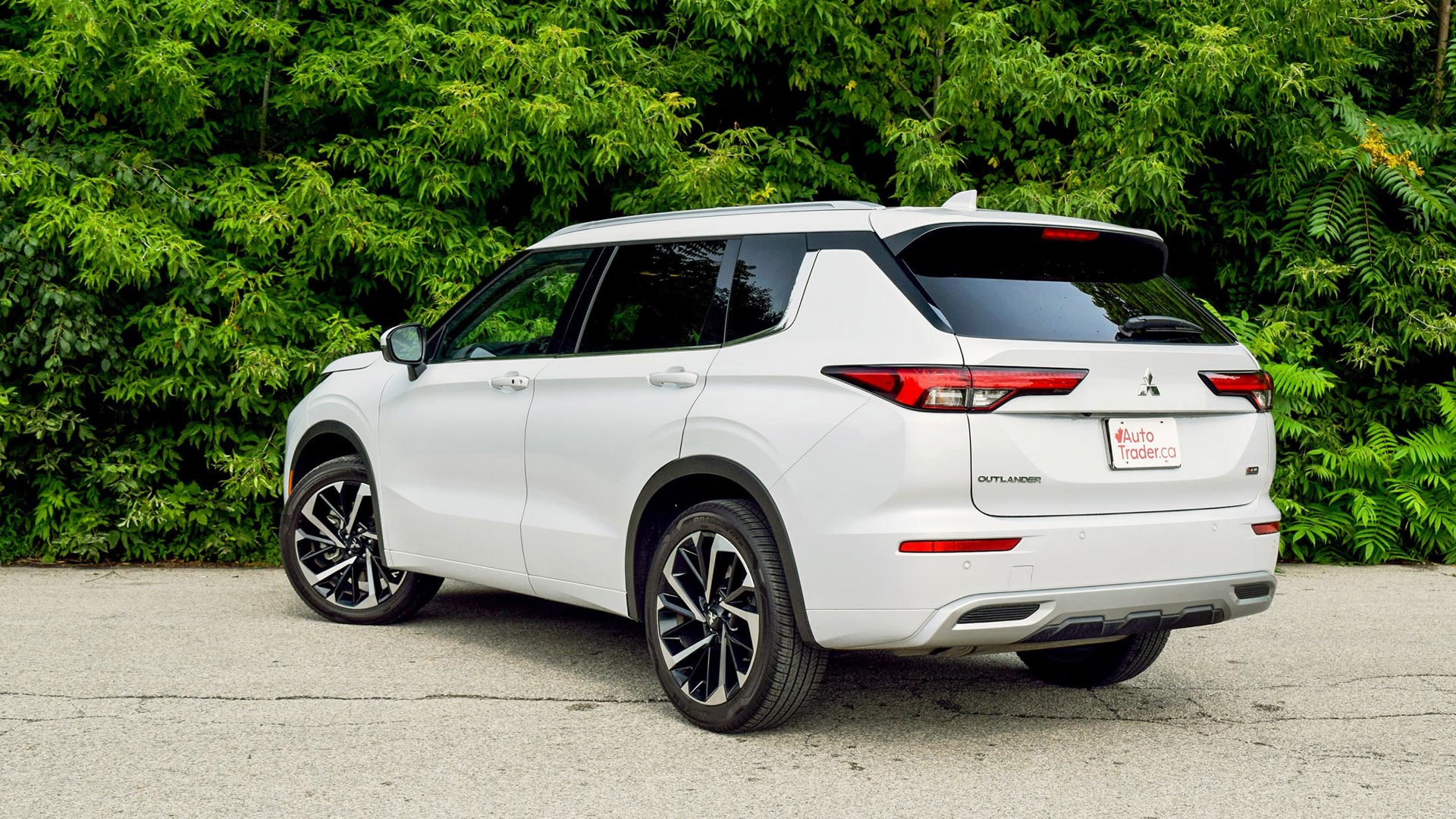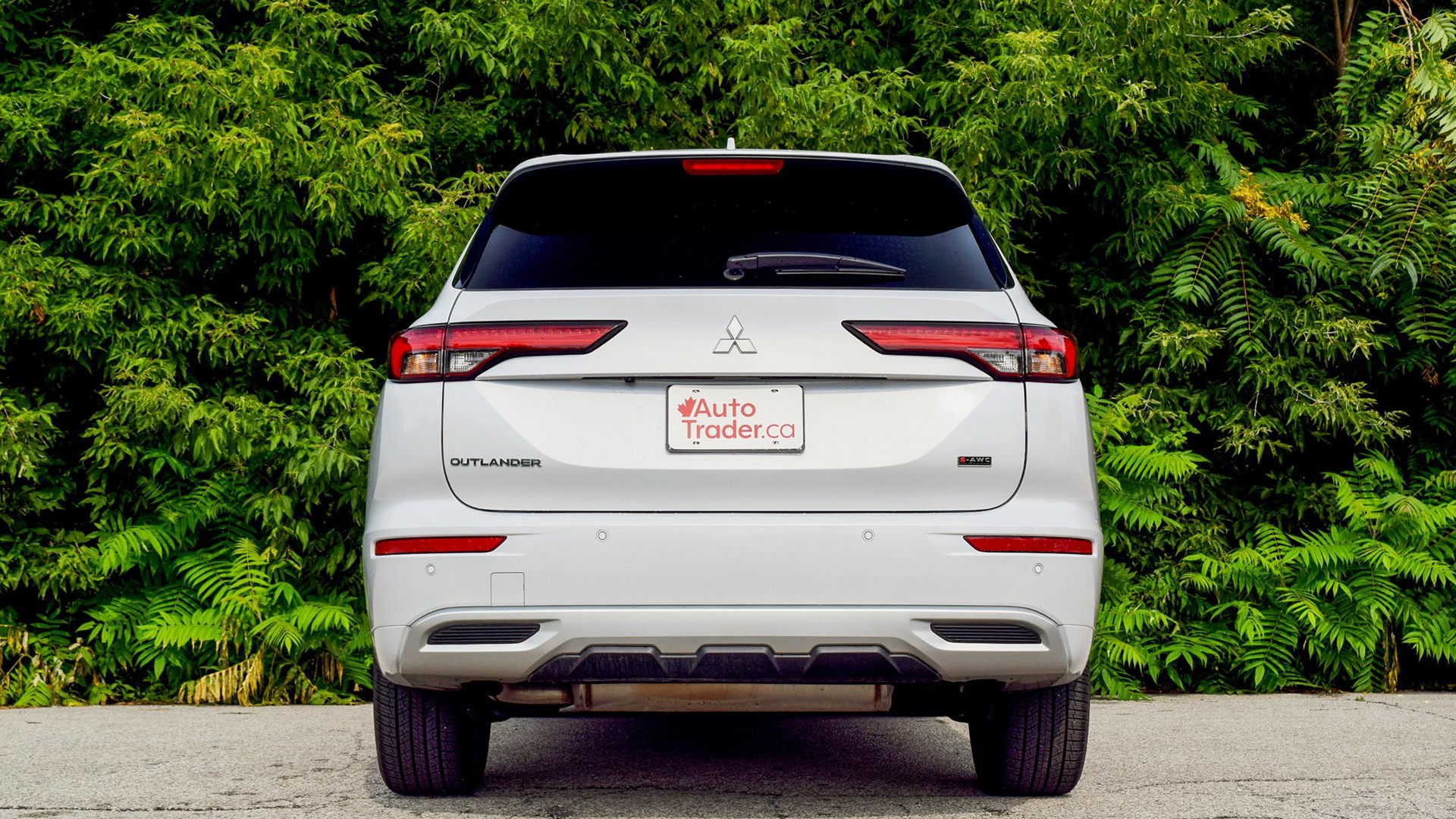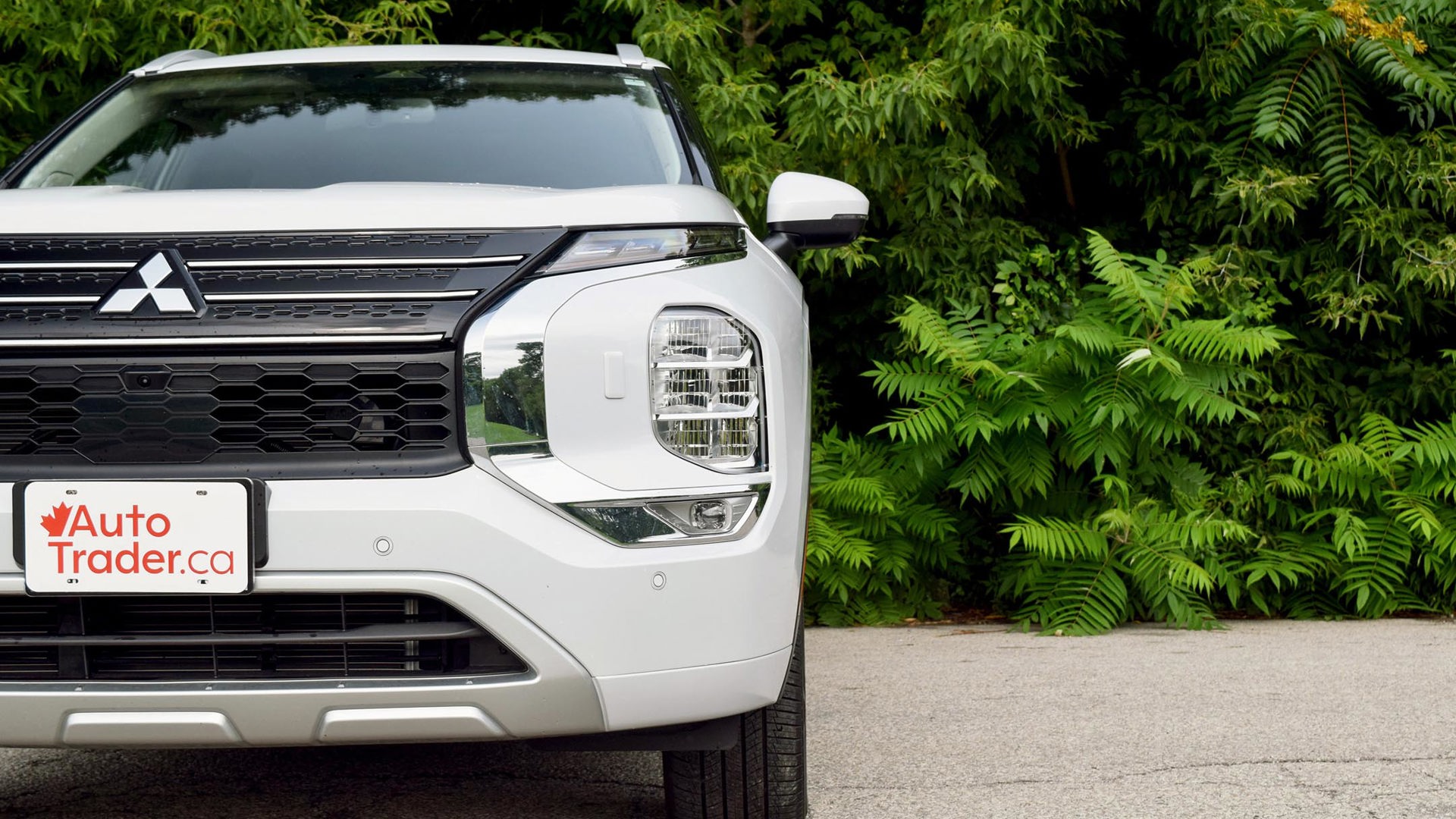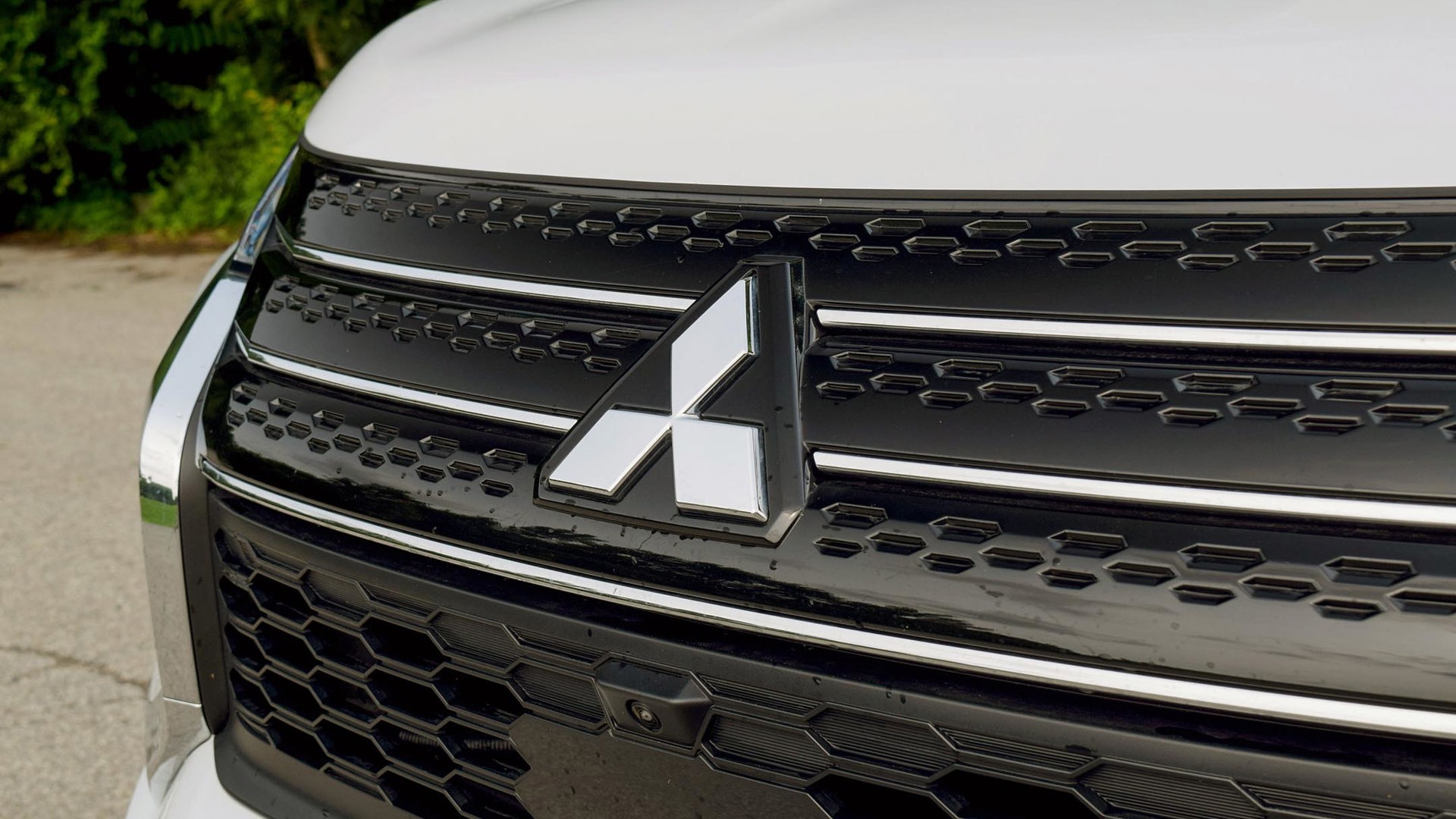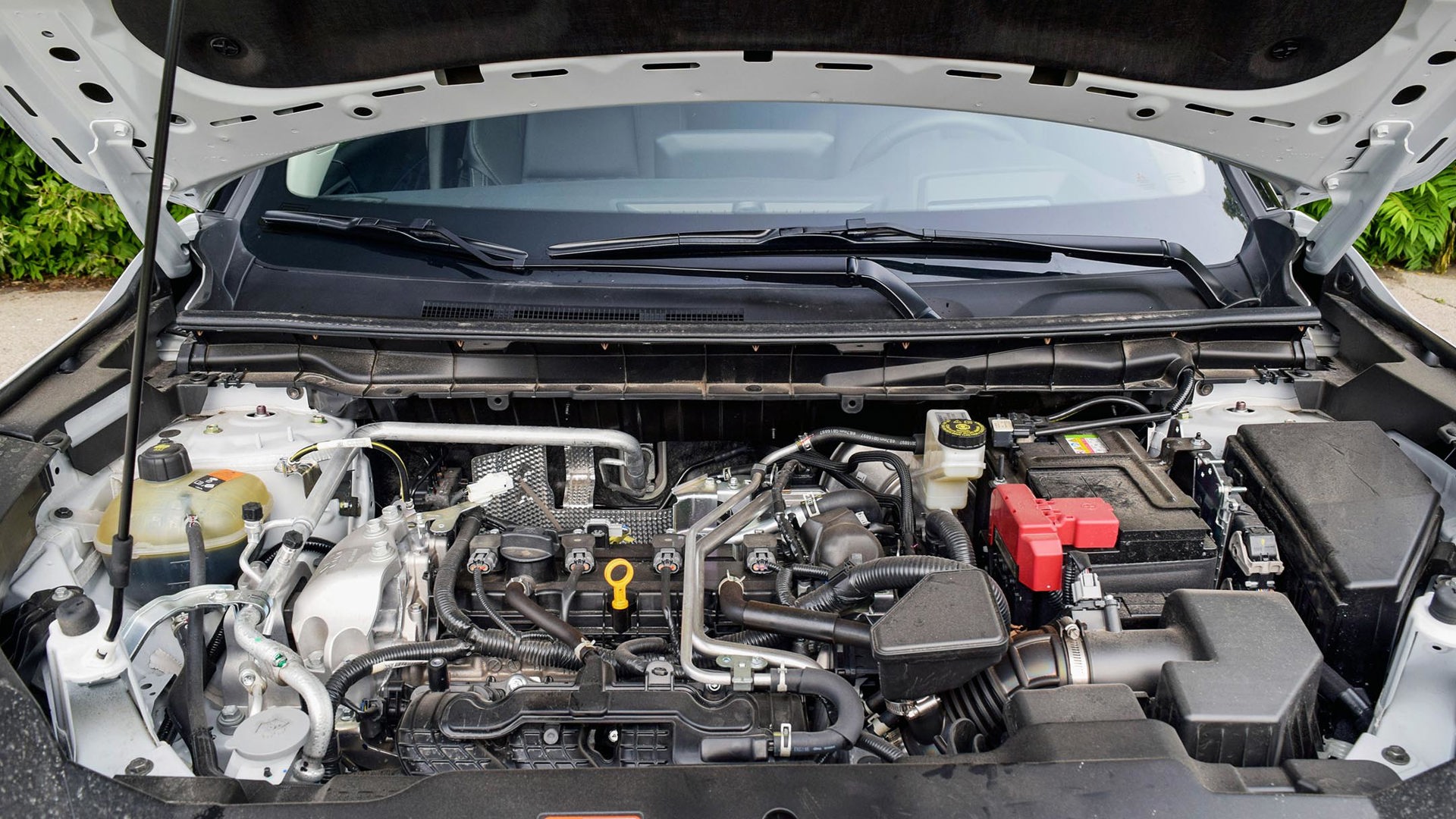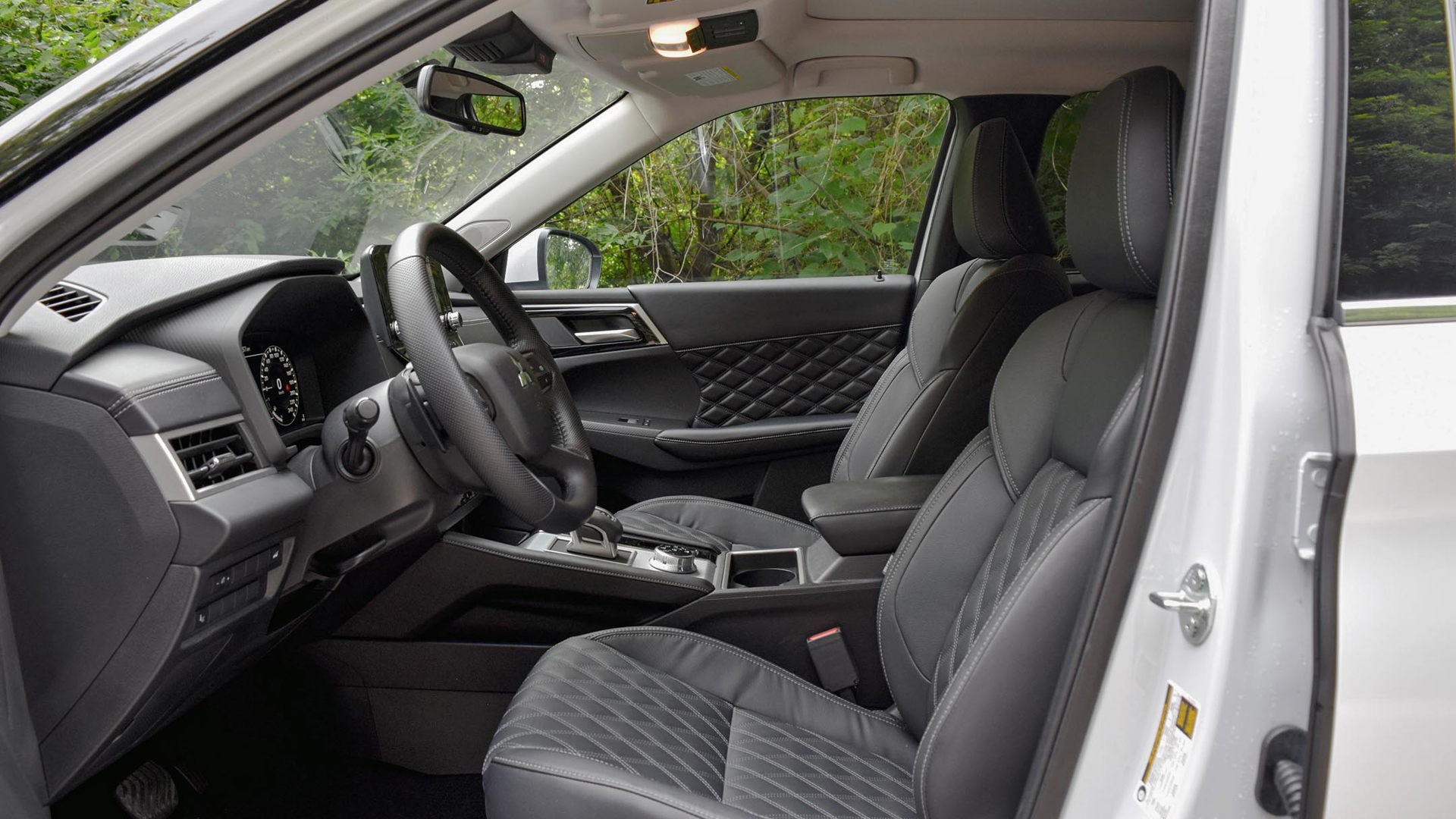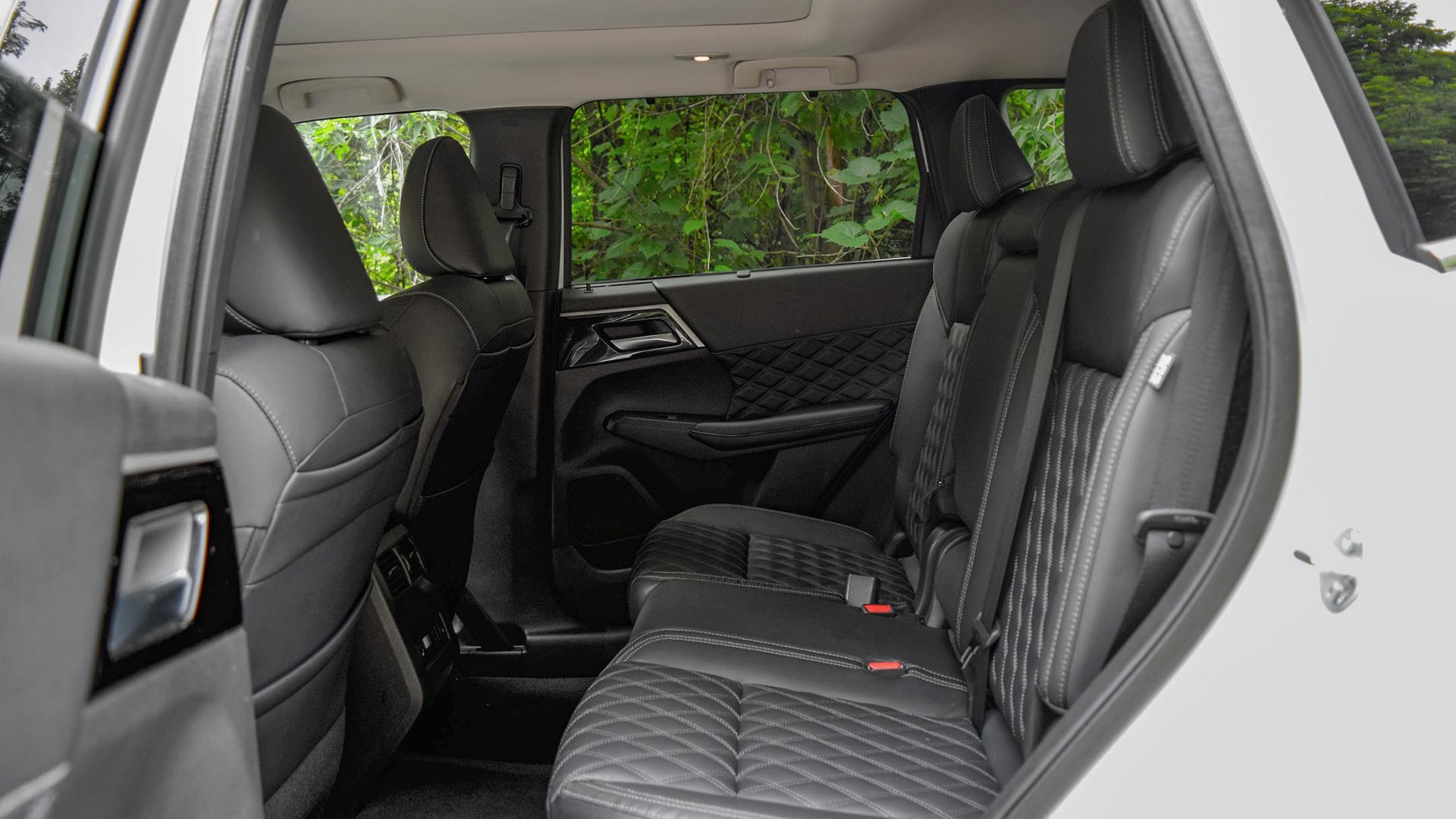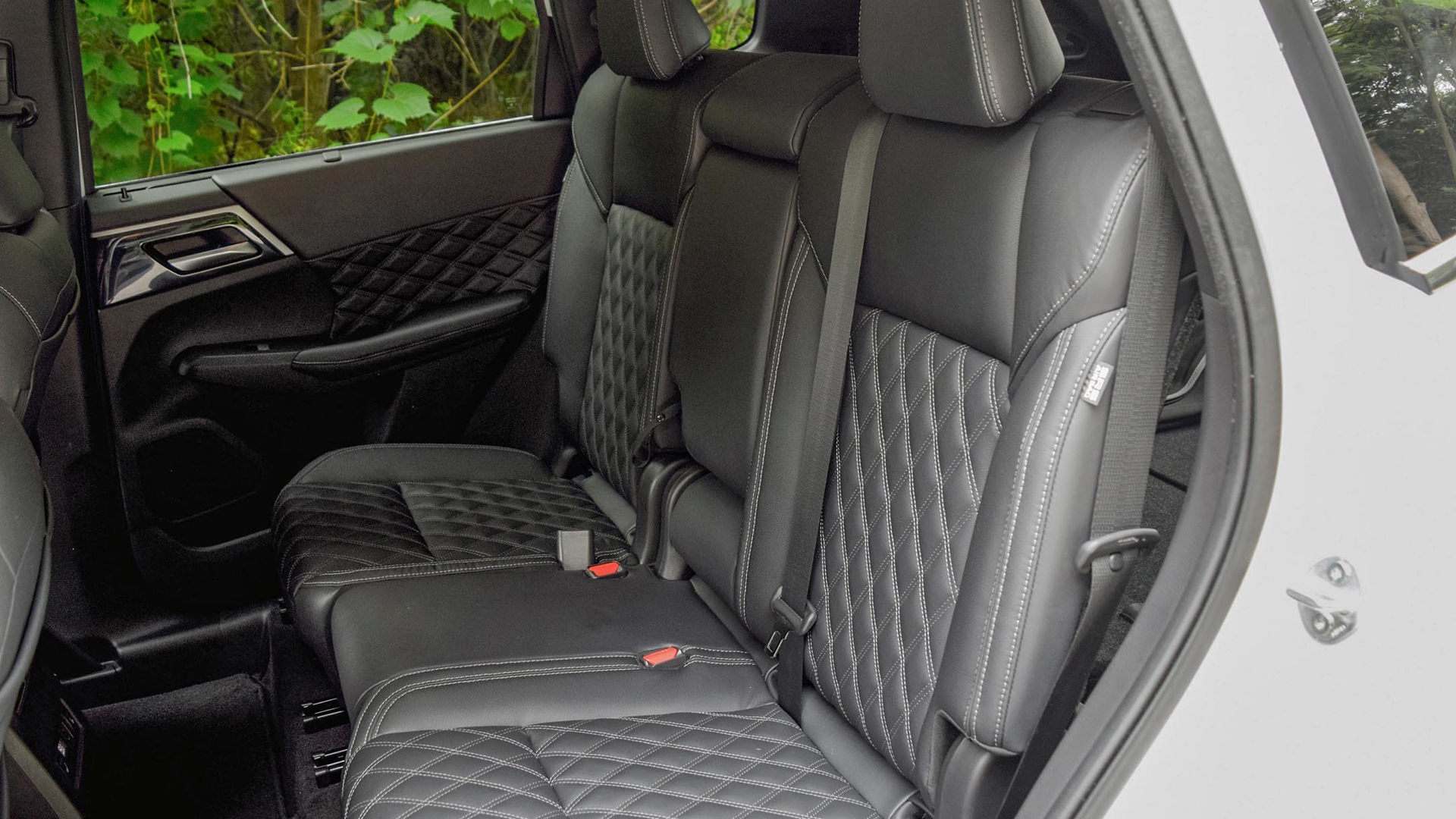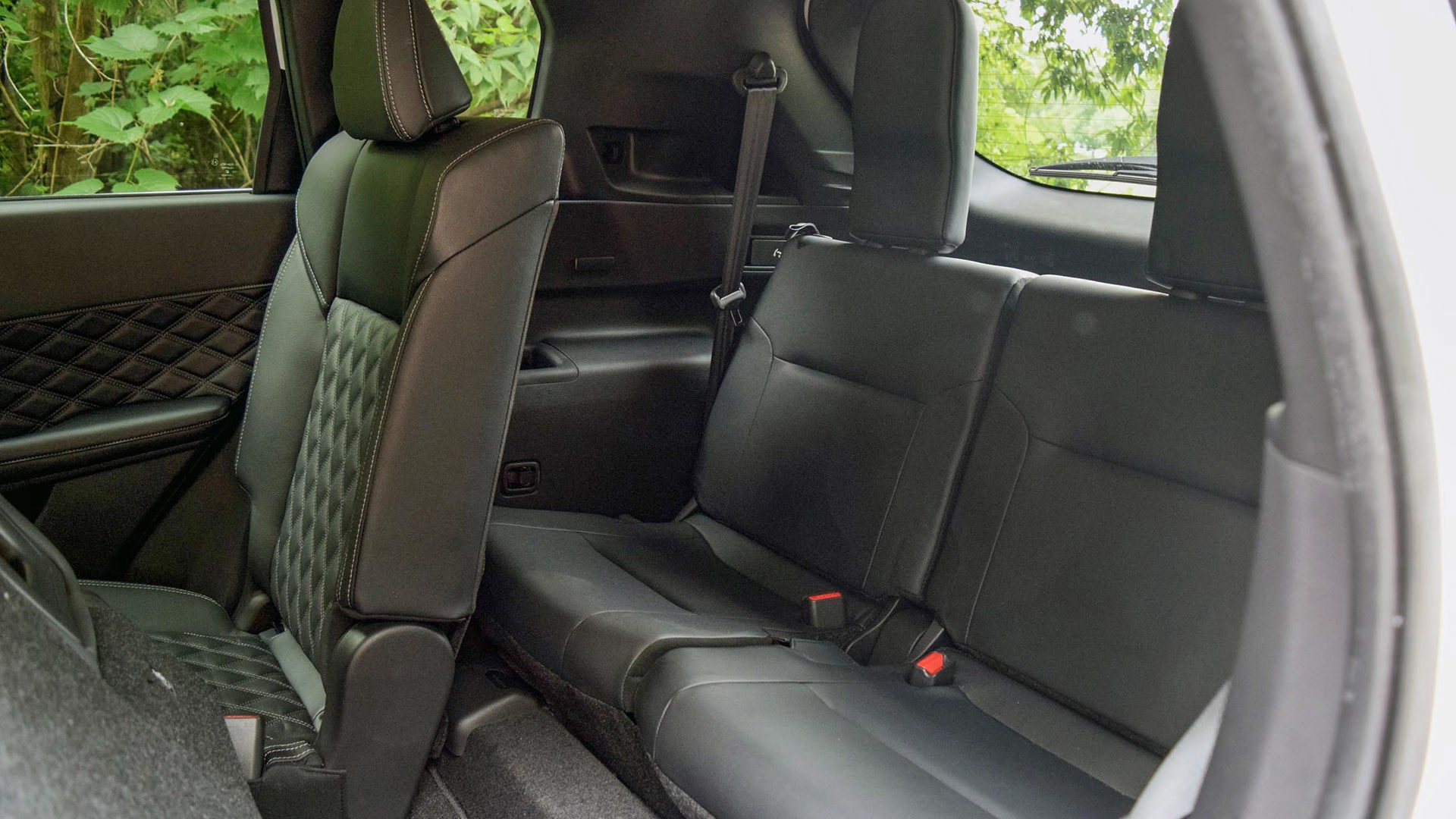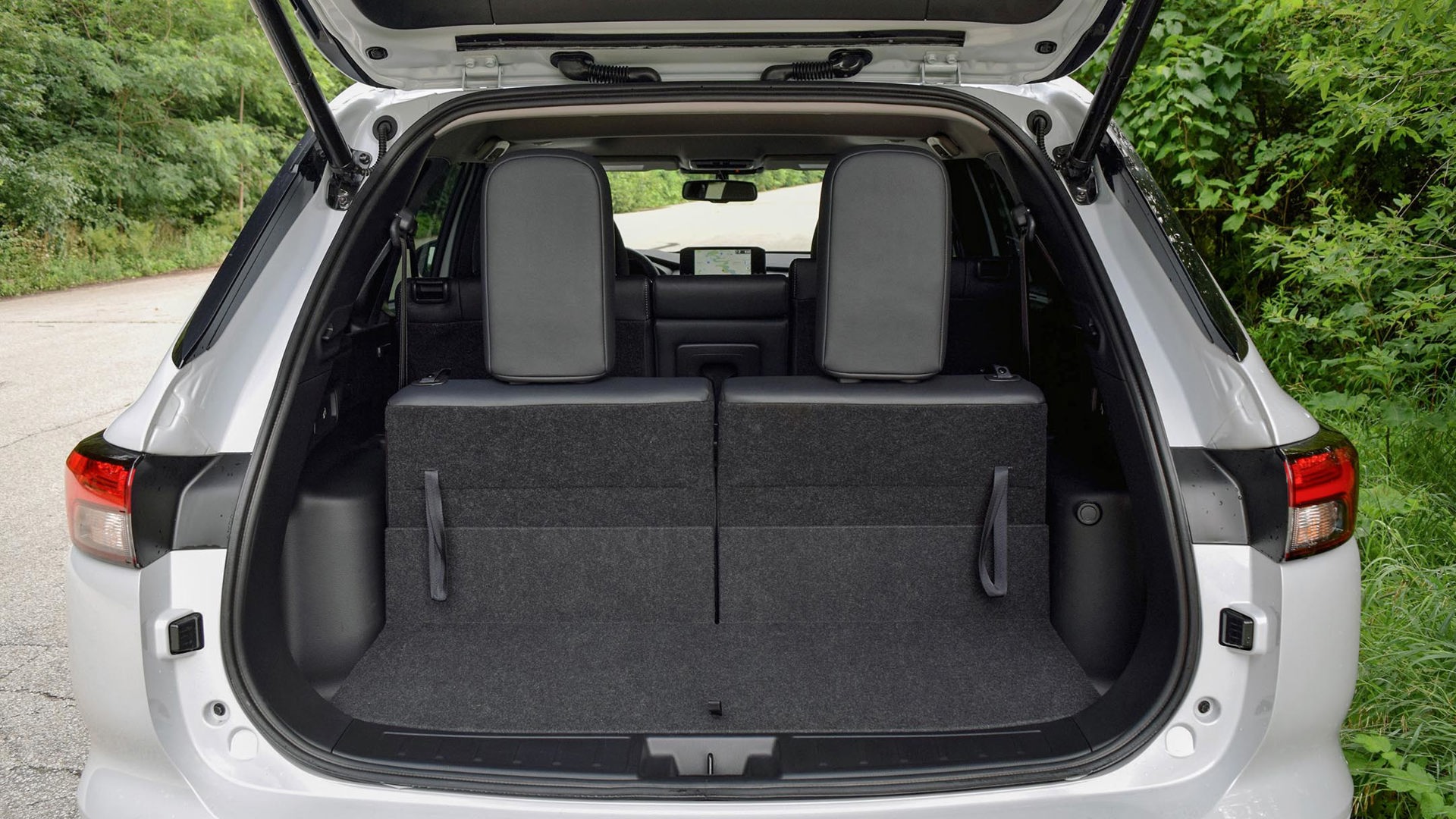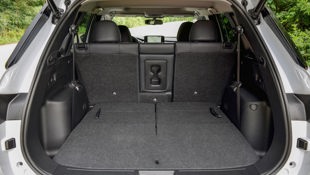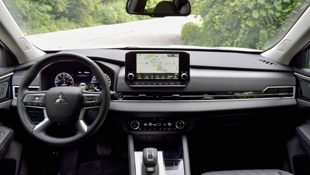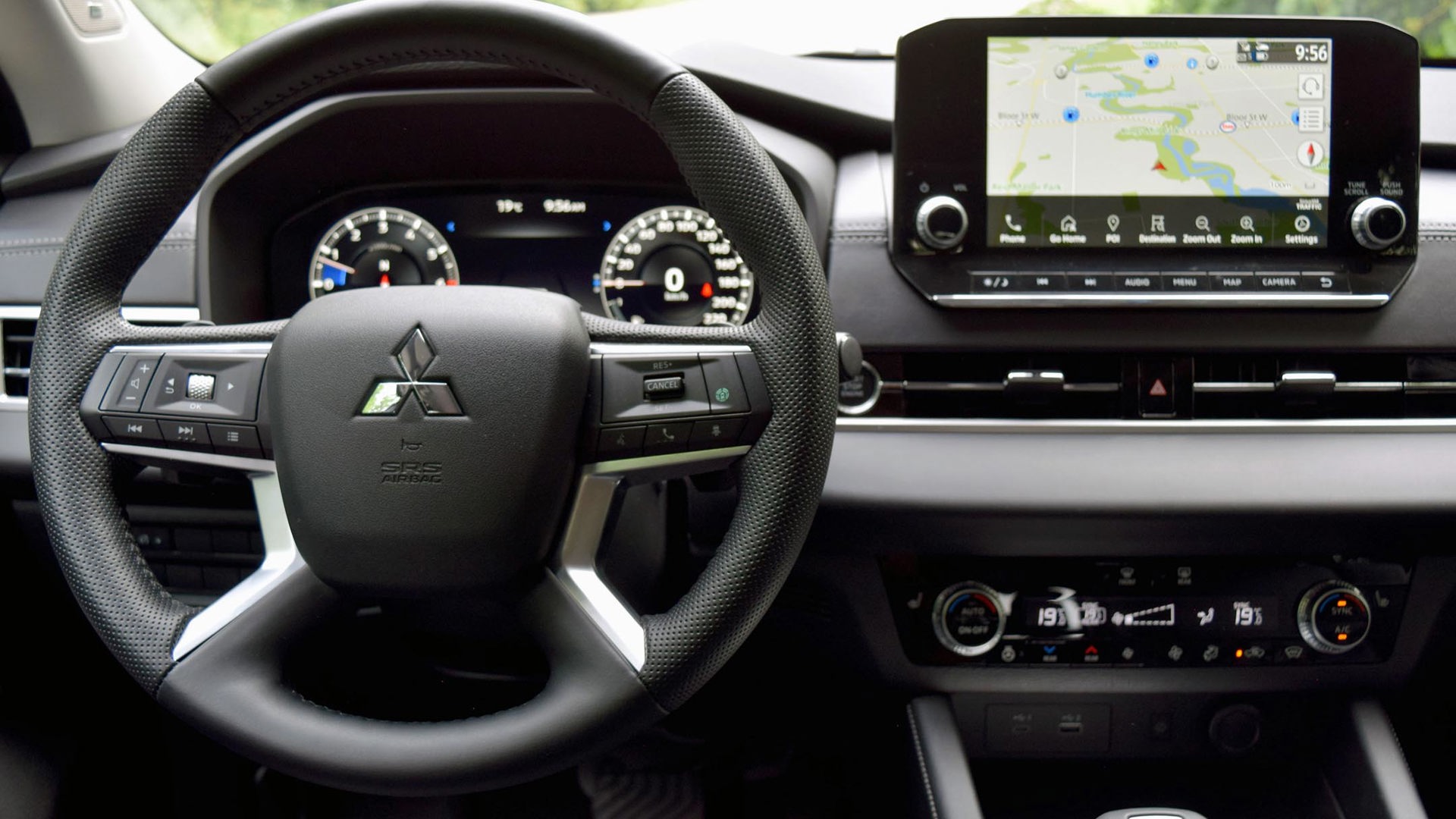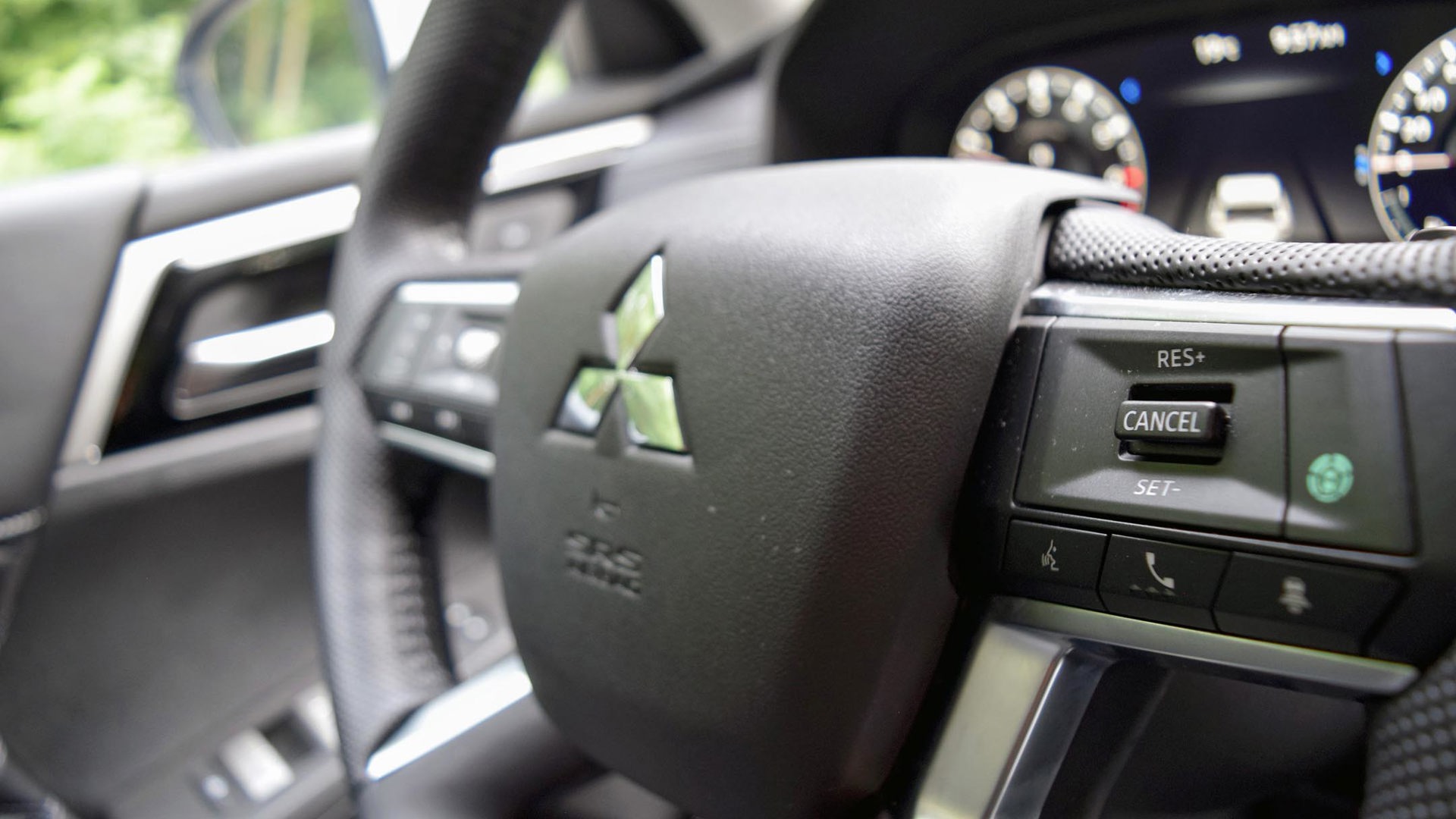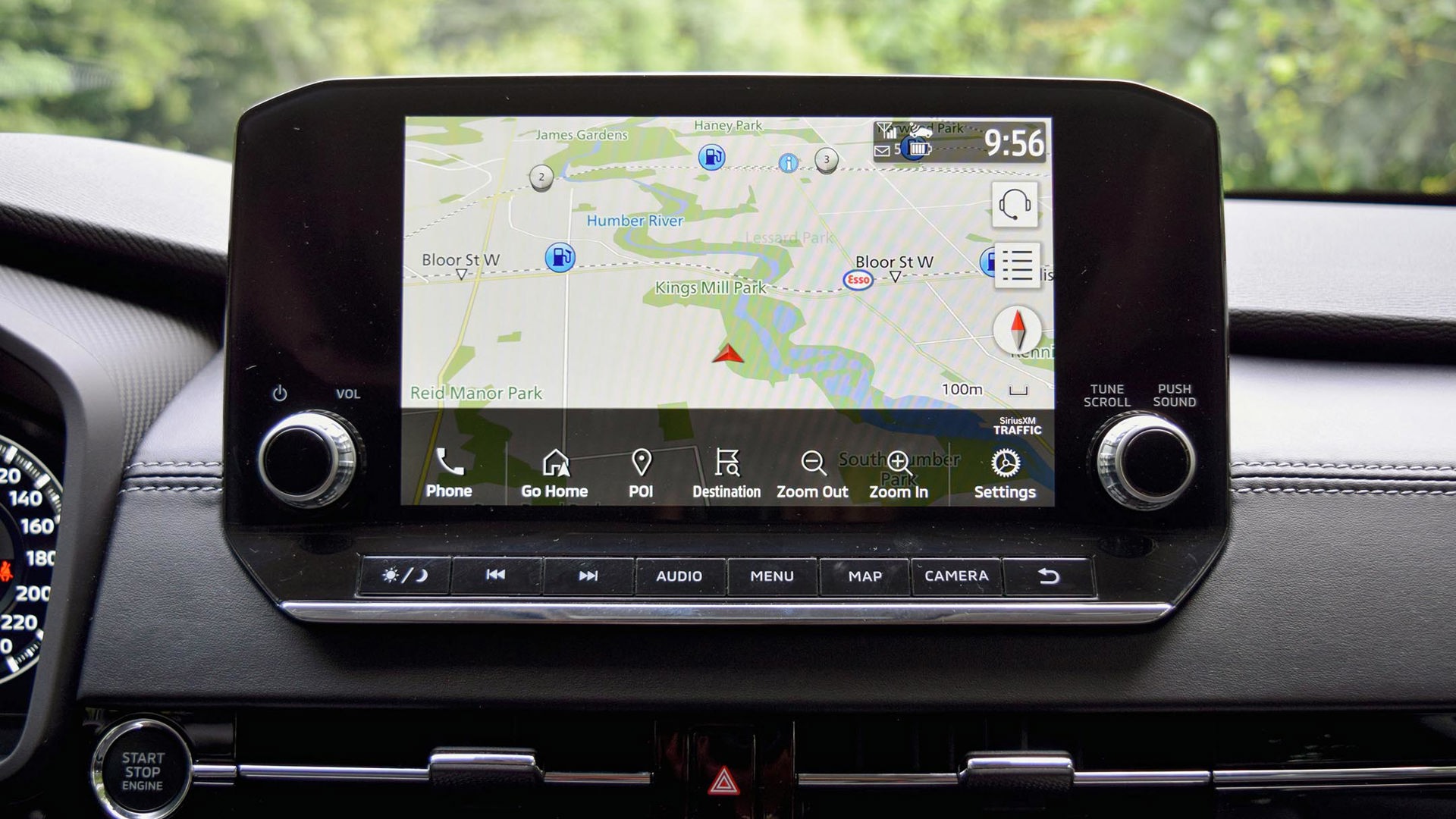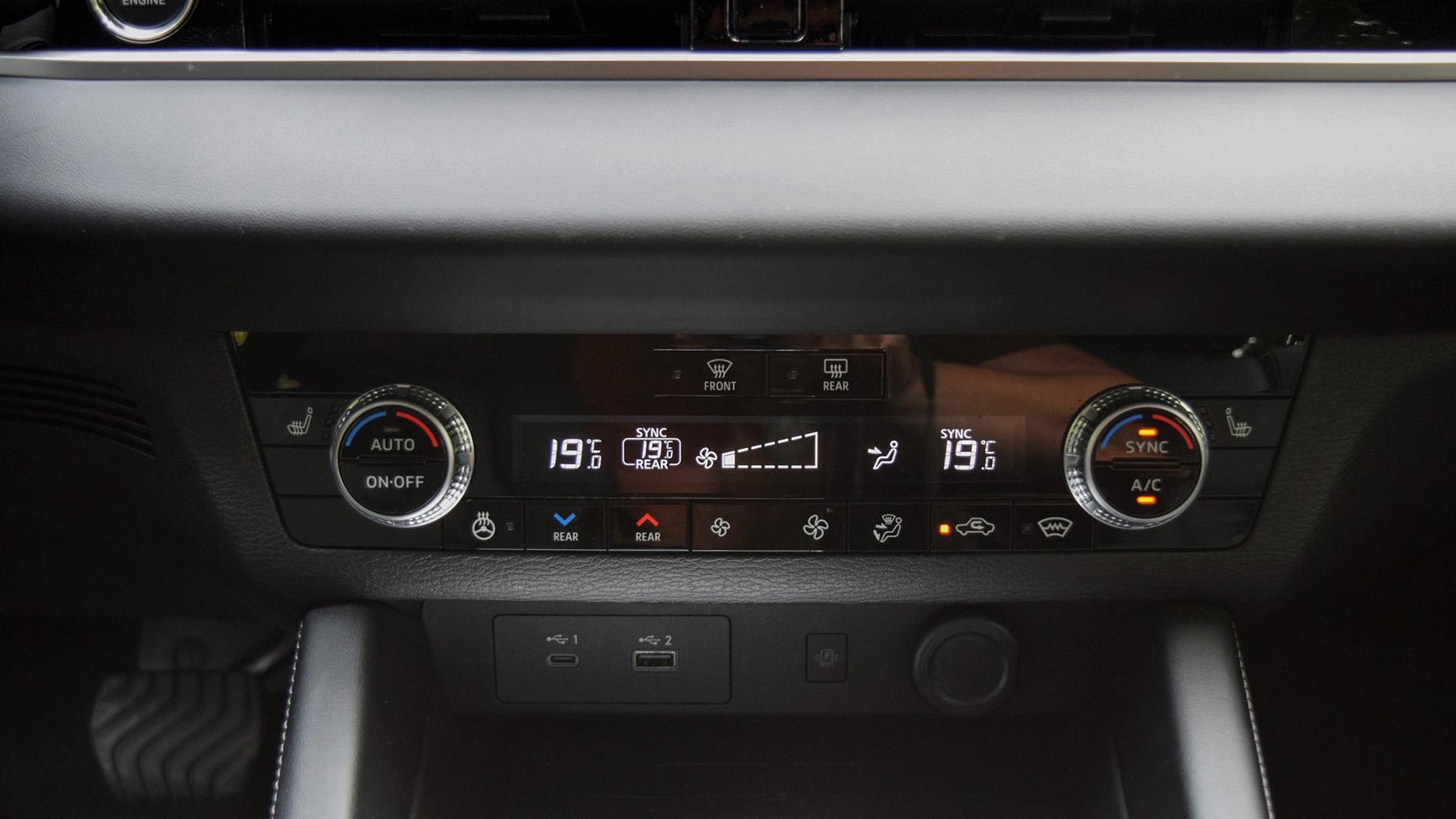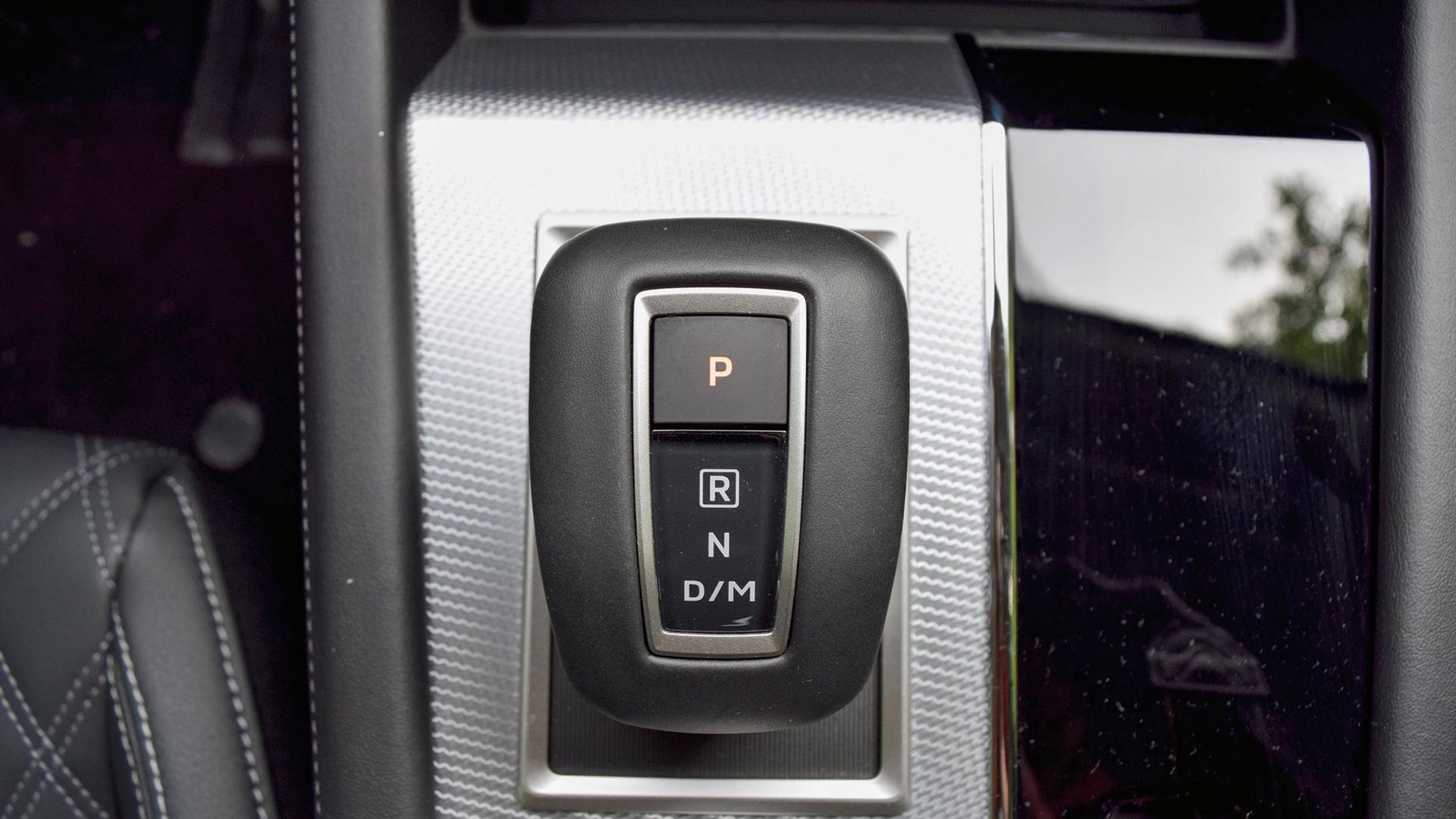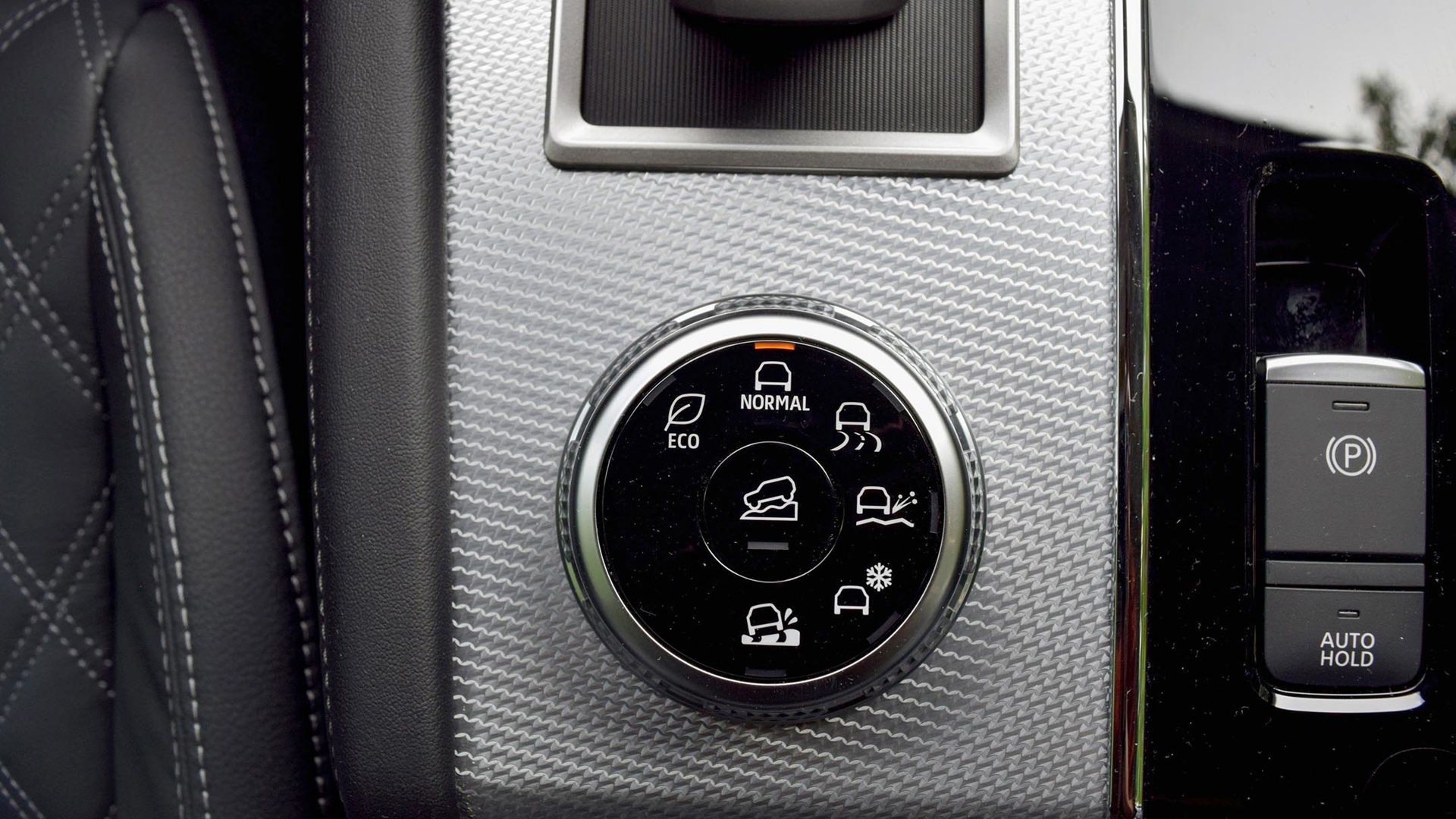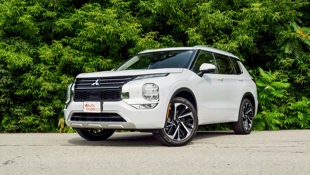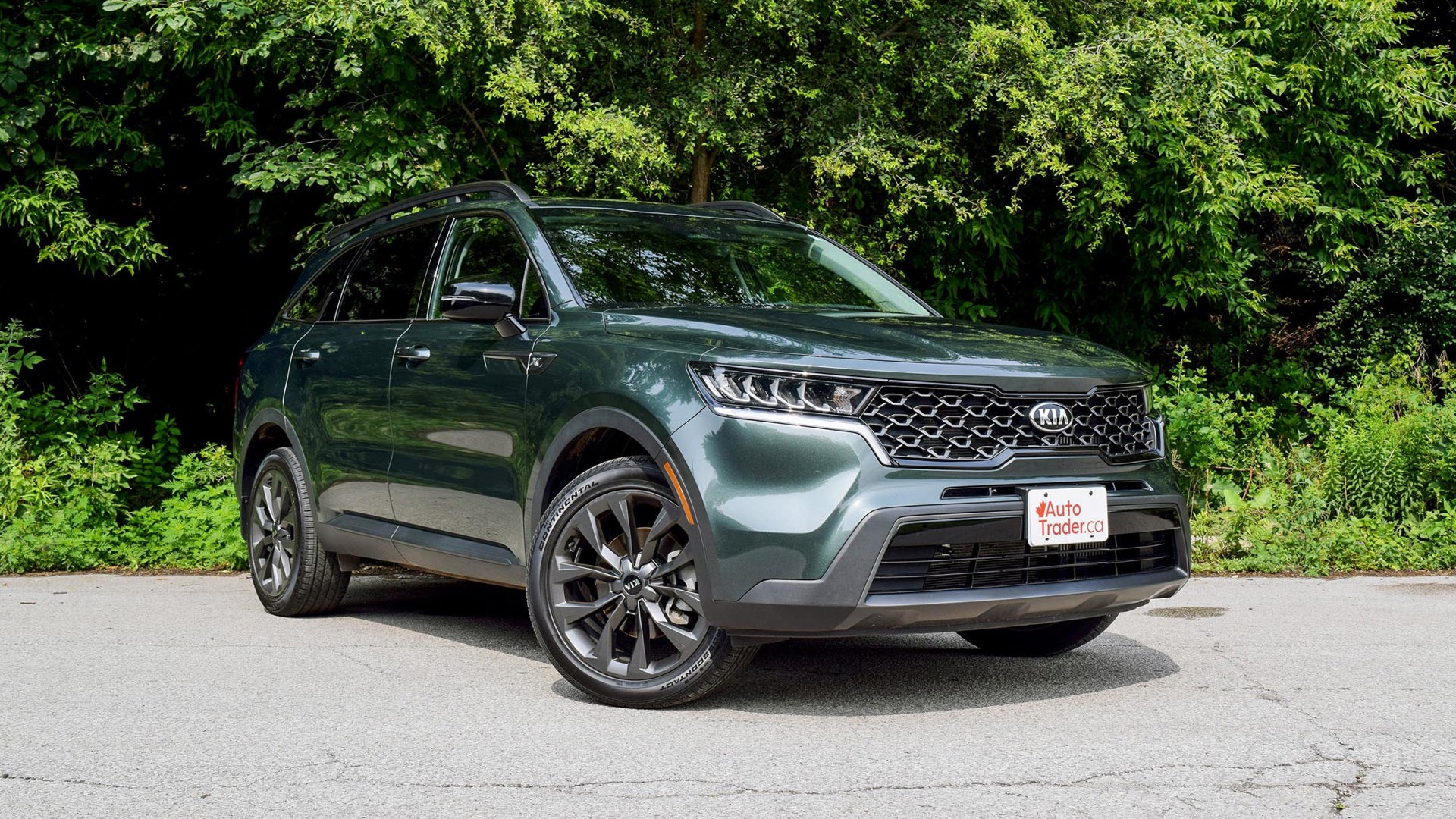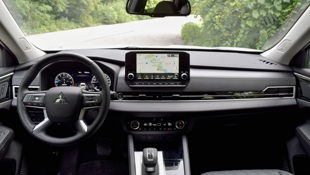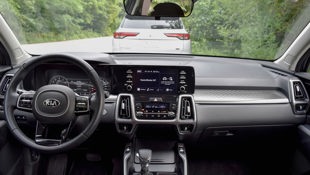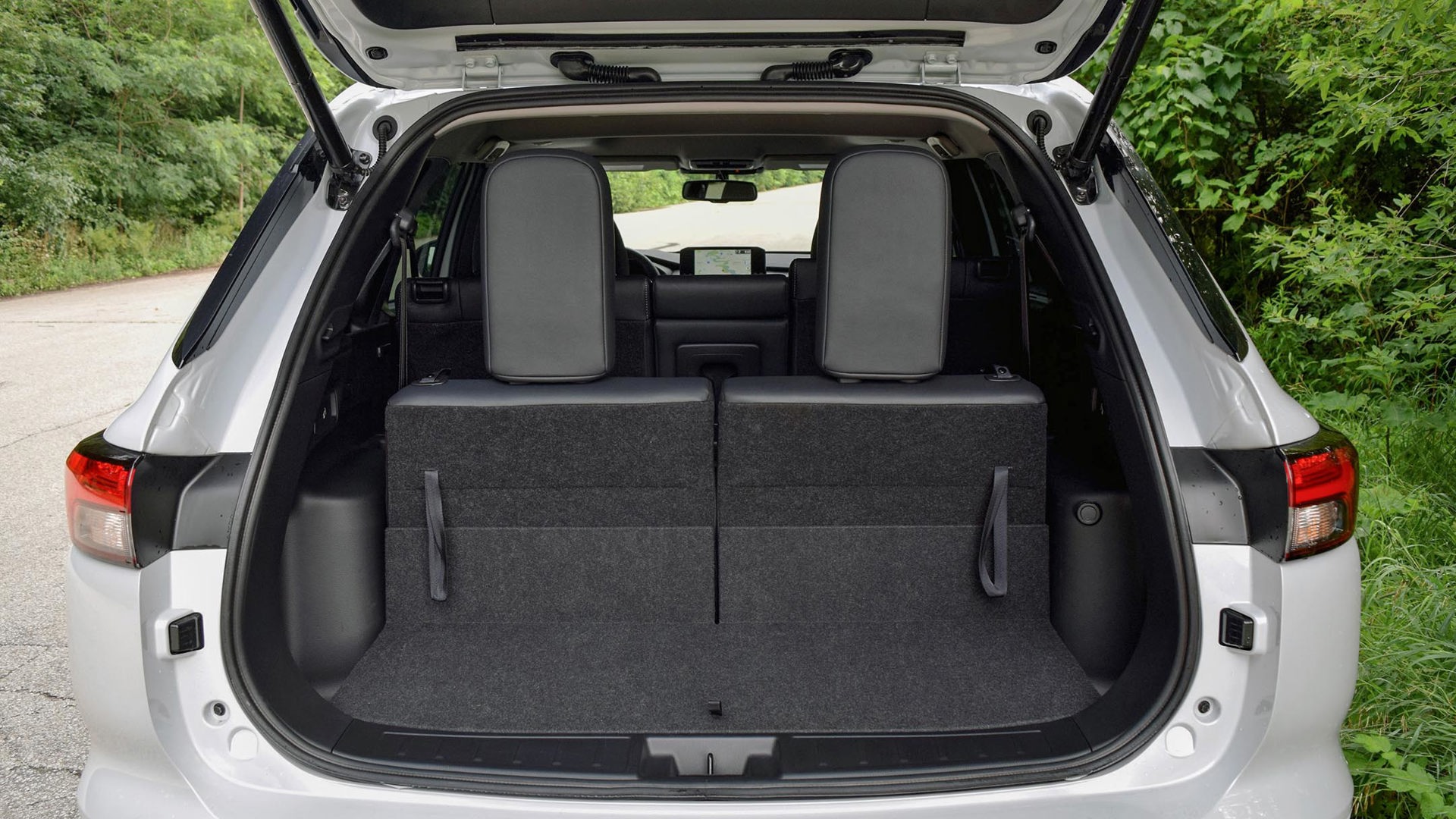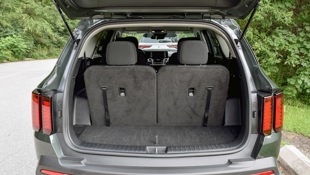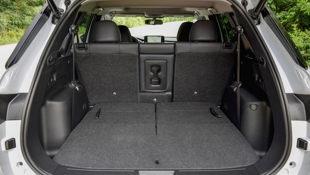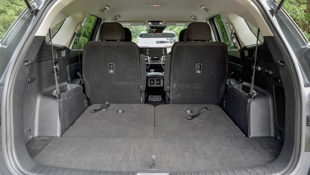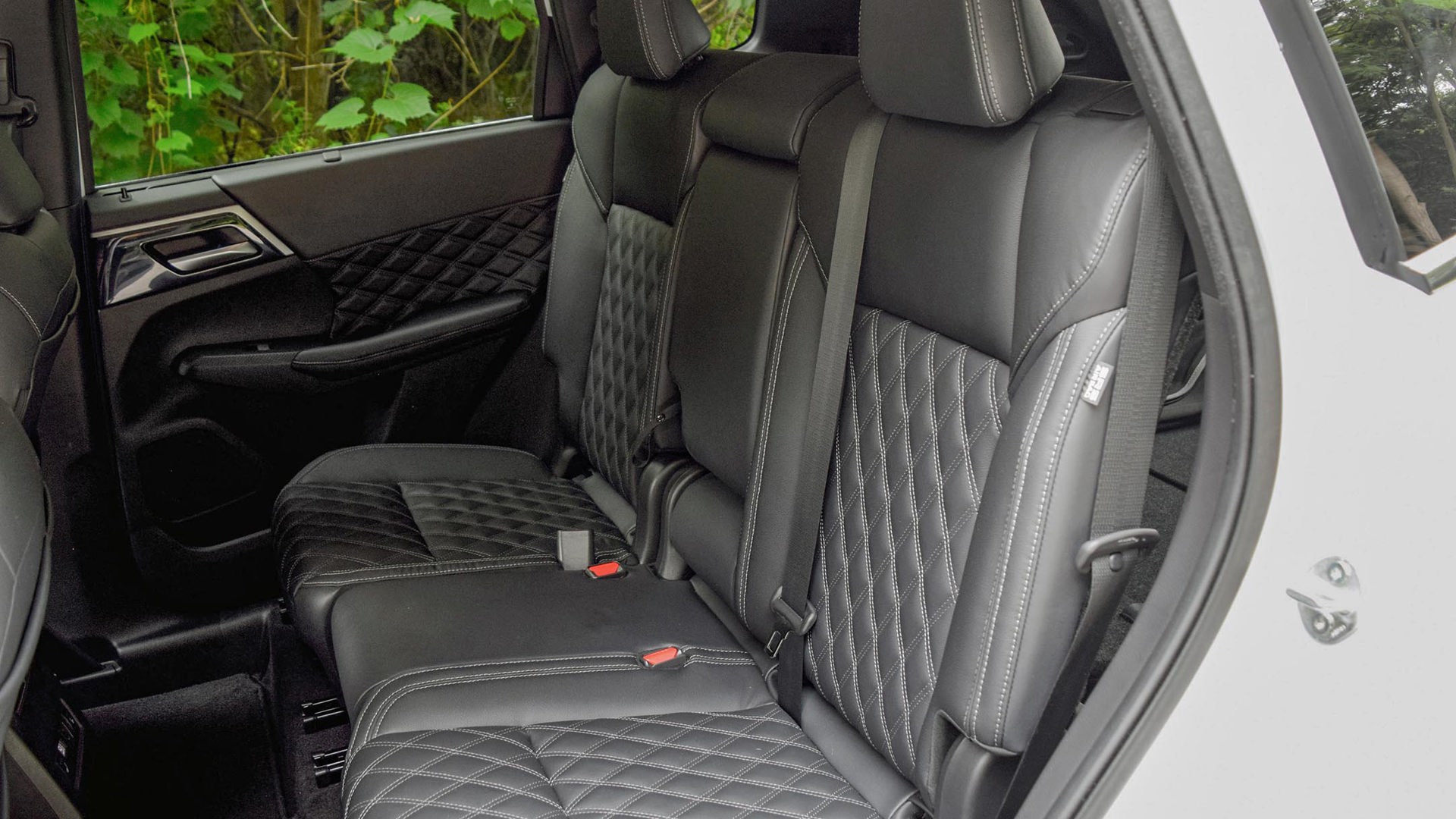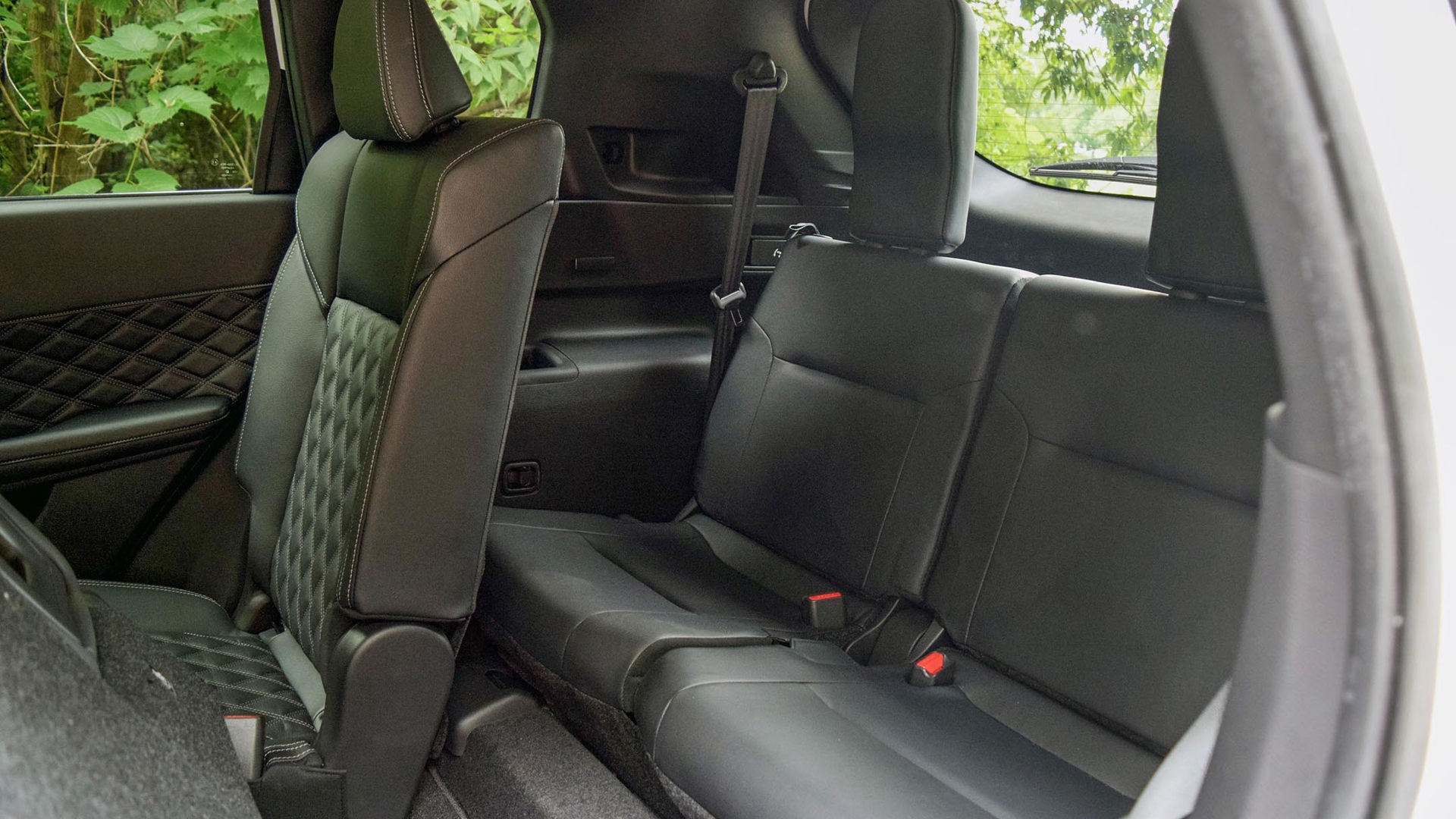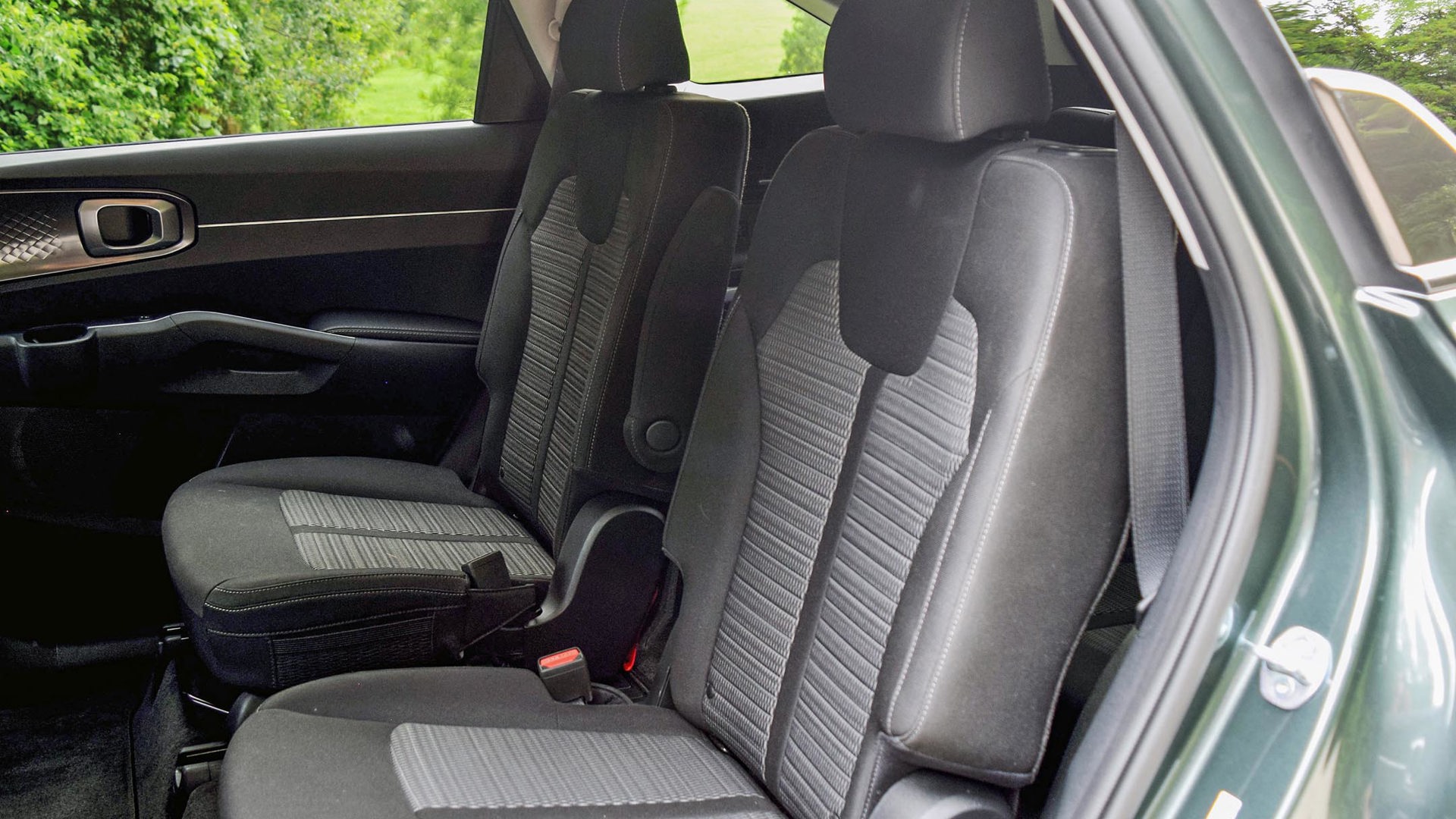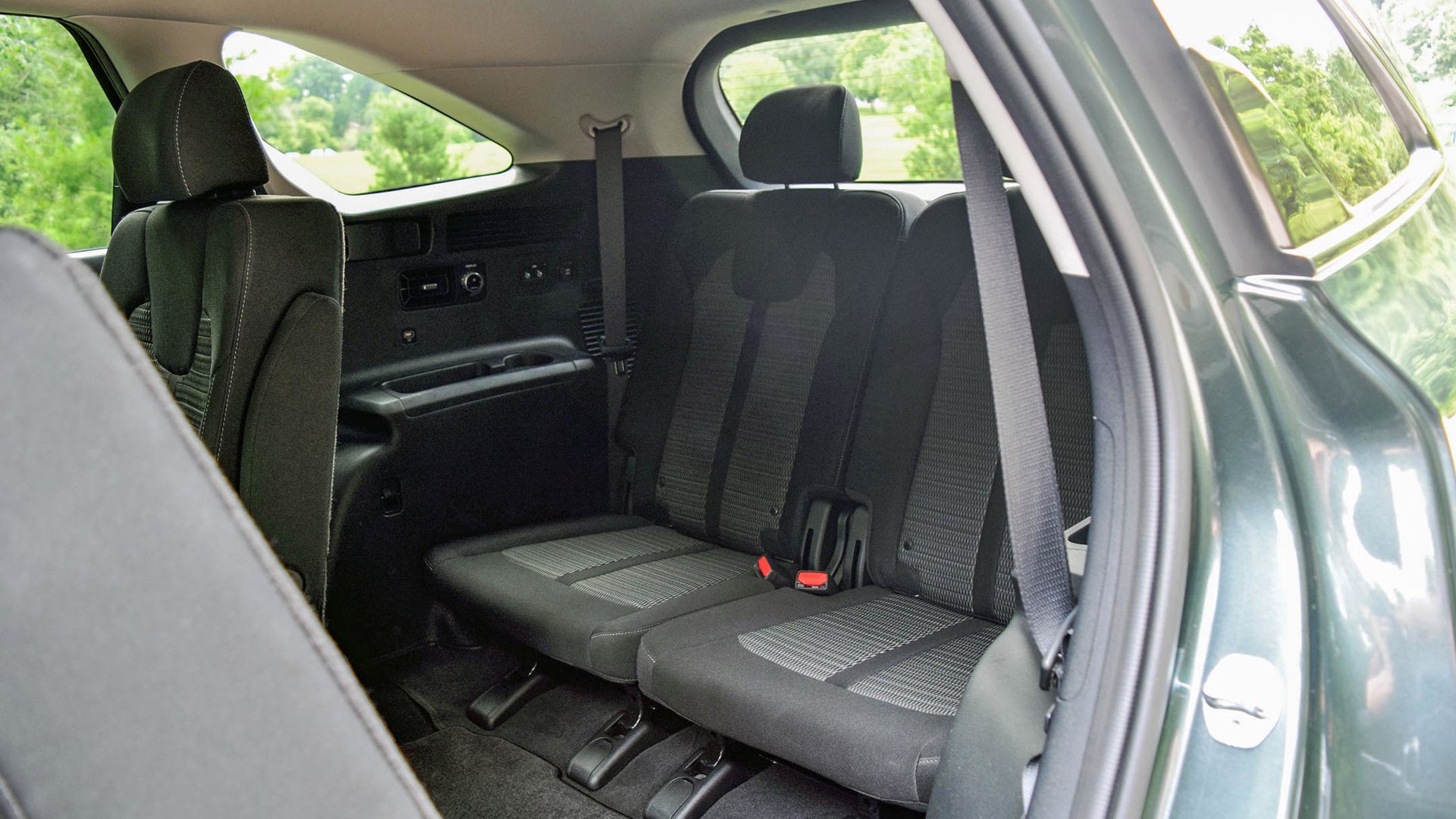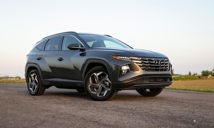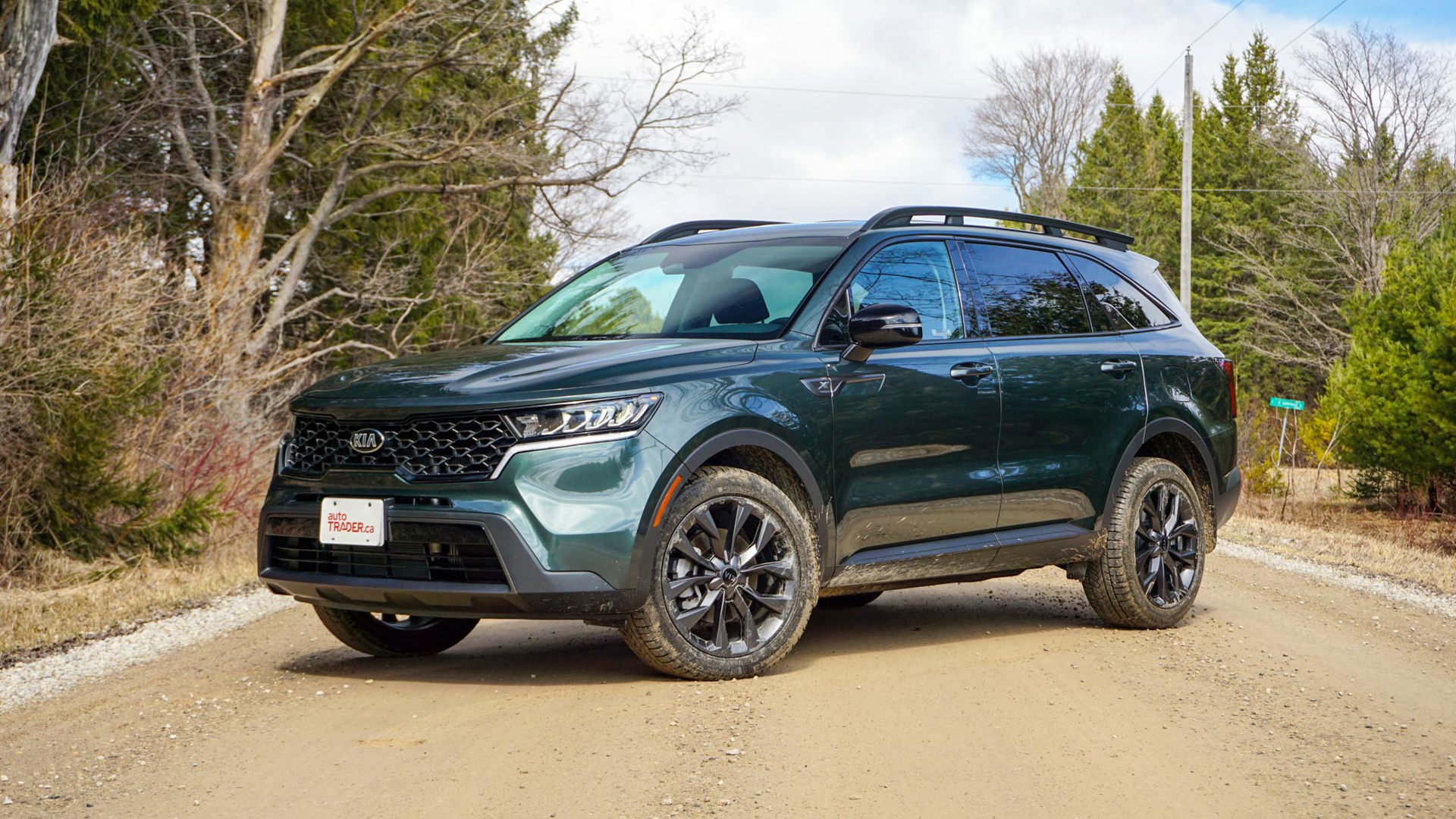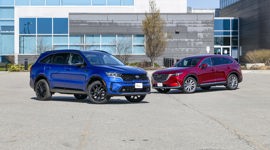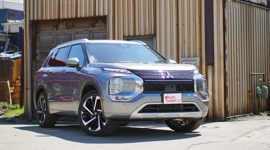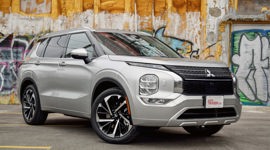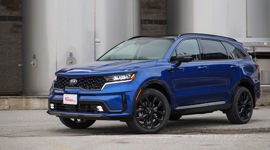Comparison Data
|
2021 Kia Sorento X-Line
|
2022 Mitsubishi Outlander GT Premium
|
|---|---|
|
Engine Displacement
2.5L
|
2.5L
|
|
Engine Cylinders
I4
|
I4
|
|
Peak Horsepower
281 hp
|
181 hp
|
|
Peak Torque
311 lb-ft
|
181 lb-ft
|
|
Fuel Economy
11.1 / 8.4 / 9.9 L/100 km cty/hwy/cmb
|
9.7 / 7.9 / 8.9 L/100 km cty/hwy/cmb
|
|
Cargo Space
357 / 1,274 / 2,139 L behind 3rd/2nd/1st row
|
332 / 950 / 2,257 L behind 3rd/2nd/1st row
|
|
Base Price
$39,495
|
$42,178
|
|
A/C Tax
$100
|
$100
|
|
Destination Fee
$1,850
|
$1,800
|
|
Price as Tested
$41,445
|
$44,228
|
|
Optional Equipment
None
|
$150 – Paint, $150
|
Families in need of three rows of seating and all-wheel drive capability have plenty of options, but an overhauled arrival from Mitsubishi has piqued our curiosity here at AutoTrader.ca.
While the 2022 Mitsubishi Outlander shares most of its underpinnings with the redesigned Nissan Rogue, it has a crucial feature that SUV is lacking: a third row of seats. It might not have the outright space of a larger three-row like the Kia Telluride, but crucially, it’s cheaper.
It’s also not alone in the tweener three-row segment, with the 2021 Kia Sorento serving as a similarly sized alternative. Slightly larger than a typical small sport utility, the Sorento makes the most of its interior dimensions while staying this side of a conventional three-row.
Styling
The 2022 Outlander has a busy exterior design, but during a full day of driving them back-to-back the front end looked rather imposing in the rearview mirror of the Sorento. A large grille with uniquely placed lighting elements, as well as 20-inch wheels, helps this SUV look big and tough despite its relatively moderate size.
Inside, it makes a far stronger impression – at least in its top spec. Quilted stitching on leather seats and door panels makes this Mitsubishi look far more premium than one might expect. It’s almost identical to the Rogue inside, with slight differences in font choice and presentation, but that’s about it.
While the cabin looks nice, some controls feel a bit cheap. Items such as the volume knob, drive mode dial, and gear selector can wobble around as if they were attached to the console with chewing gum.
The 2021 Kia Sorento looks rugged in an authentic way, partly due to the X-Line appearance package found on this tester. Up front, it channels the design of the well-received and boxy Telluride, while the side profile allows it to etch its own personality. Not bulbous like the Sportage nor quirky like the Soul or Seltos, the Sorento could easily slot into the Jeep lineup.
The interior is a little less impressive than the Outlander’s, with lower-grade materials used throughout, though it’s not surprising given their different places in their respective lineups. While there are inspirations from the Telluride here, including controls on the edges of the centre console, the Sorento also has a few unique design elements. There are mesmerizing designs on the vents, while the climate system is controlled via toggles, adding a bit of quirkiness and character to the cabin.
Mitsubishi Outlander: 7.5/10; Kia Sorento: 7.5/10
Safety
Mitsubishi includes several standard safety features across the Outlander lineup like lane-departure warning, front and rear automatic emergency braking, driver attention alert, and blind-spot monitoring. Adaptive cruise control is added to the LE and SEL trim models, while more advanced safety features like lane-keeping assistance, traffic sign recognition, and adaptive cruise control that works in stop-and-go traffic are part of the top-trim GT models. The Insurance Institute for Highway Safety (IIHS) has yet to test the Outlander but has awarded the mechanically identical Nissan Rogue with its Top Safety Pick+ title, which bodes well for this Mitsubishi.
The Sorento has a tougher time keeping up with the Outlander’s safety features. Base LX+ models come standard with lane-keeping assistance and forward collision avoidance. The X-Line adds items like blind-spot monitoring with rear cross-traffic alert, and rear parking sensors. EX+ and SX models, meanwhile, include adaptive cruise control, a rear safe exit system, a blind-spot view monitor in the instrument cluster, front parking sensors, and a surround-view system. The Sorento was awarded the Top Safety Pick award from the IIHS, which is one level below its top rating. The vehicle scored poorly when it came to some headlight glare and child-seat anchor positions.
Mitsubishi Outlander: 9/10; Kia Sorento: 8/10
Features
Considering the Outlander in this comparison is a higher trim level, it should – and does – have more features and equipment between the two vehicles. However, in its top spec the Sorento boasts more equipment than its rival from Mitsubishi.
The Outlander GT Premium includes heated front and rear seats, a heated steering wheel, rain-sensing wipers, three-zone climate control, a panoramic sunroof, wireless phone charging, a nine-inch infotainment screen with Android Auto and wireless Apple CarPlay support, a massive 12.3-inch digital gauge cluster, and a head-up display. But even base models feature handy items like heated seats, dual-zone climate control, push-button start, and an eight-inch touchscreen with those phone-mirroring functions.
The base Sorento LX+ comes with very few standout features, although heated front seats are included along with an eight-inch touchscreen infotainment system with Android Auto and Apple CarPlay support. The LX Premium sees far more amenities, including power-adjustable seats, a heated steering wheel, dual-zone climate control, a wireless phone charger, and push-button start. The X-Line adds nothing new but swaps the second-row bench for a pair of captain’s chairs. Leather upholstery is found in the EX and above, as is a power tailgate, and an auto-dimming rearview mirror.
The EX+ gets fancy interior LED lighting, heated rear seats, rear sunshades, a panoramic sunroof, and Kia’s connected services, as well as the brand’s highway driving assist, and a larger infotainment screen. The top-trim SX model receives a digital instrument display, memory seats, a remote-folding second row, an upgraded sound system, and a head-up display.
Mitsubishi Outlander: 8.5/10; Kia Sorento: 8/10
User Friendliness
Both vehicles make good use of their touchscreen infotainment systems and include knobs for audio and climate settings. It sounds simple, but it all works just as expected on the road. The digital gauge cluster and head-up display in the Outlander present plenty of information in an easier-to-read format, but they don’t make (or break) the experience, either. Both infotainment systems work well. The Outlander’s is large and easy to read, while the Sorento’s is slightly quicker to respond.
Mitsubishi Outlander: 10/10; Kia Sorento: 10/10
Practicality
Behind their third rows of seats, cargo space is limited to 332 L in the Outlander compared to 357 L in the Sorento. Fold that third row down, and the Outlander has a more reasonable 950 L of space while the Sorento features 1,274 L. Folding down both rows leads to a maximum of 2,257 L of space in the Outlander, while the Sorento features 2,139 L.
When it comes to their third rows, the Sorento is far more accommodating, though don’t mistake that for a suggestion of comfort back there. It’s still fairly cramped, but there’s a bit more head- and legroom than in the Outlander. Space in the second row favours the Kia as well, but with a far smaller difference.
However, it’s important to note that X-Line and higher trim levels of the Sorento feature seating for six, with a pair of captain’s chairs in the second row. The two lesser trims (LX+ and LX Premium) feature a bench seat like the Outlander, providing seating for seven as a result.
Mitsubishi Outlander: 8/10; Kia Sorento: 8.5/10
Comfort
Generally, the cabin feels a bit more comfortable in the Outlander due to softer materials in more areas. On the road, the vehicle feels just fine, although the 20-inch wheels can lead to a slightly harsher ride than expected. Fortunately, the Outlander is relatively quiet, with engine and tire noise present in some scenarios.
The cloth seats in the Sorento are surprisingly comfortable, and the additional sidewall of the tires led to a smoother, softer ride. However, it comes with additional noise inside.
Mitsubishi Outlander: 7.5/10; Kia Sorento: 7.5/10
Power
The Outlander is at a disadvantage here, packing a 2.5L four-cylinder engine making 181 hp and 181 lb-ft of torque that’s paired to a continuously variable transmission (CVT) that sends torque to all four wheels. It’s an adequate powerplant, doing just enough to get the vehicle around – no more, no less. It gets a bit loud and doesn’t feel confident in some passes, but it should be enough for getting around town.
The Sorento is far more capable in this regard, with a 2.5L turbocharged four-cylinder engine that’s paired with an eight-speed dual-clutch automatic transmission and all-wheel drive. It puts out 281 hp and 311 lb-ft of torque and feels far more lively on the go. Passing is easy, though the transmission can sometimes feel a bit unrefined.
The Sorento’s extra output also helps provide additional towing capability. It can tow as much as 1,588 kg (3,500 lb), while the Outlander maxes out at 907 kg (2,000 lb). However, it’s worth noting that LX+ and LX Premium models are powered by a naturally aspirated engine that’s similar to the Outlander’s, with towing capacity dropping to 1,270 kg (2,800 lb).
Mitsubishi Outlander: 7.5/10; Kia Sorento: 9.5/10
Driving Feel
The Outlander does the job as expected. The steering feel is accurate though not particularly engaging. It’s a little on the light side, so it won’t thrill, exhilarate, or impress. Bordering on boring, the Outlander feels perfectly adequate on the road.
The Sorento makes good use of its motor, allowing it to feel a bit more aggressive and engaging on the road. Heavier steering feel leads to a sense of connection with the vehicle. There’s a level of robustness that leads to a more satisfying drive.
Mitsubishi Outlander: 7/10; Kia Sorento: 8.5/10
Fuel Economy
As expected, the Outlander and its gentler powertrain returns better results at the pumps. The Outlander is rated for 9.7 L/100 km on the highway, 7.9 in city driving conditions, and 8.9 in combined settings.
The Sorento manages 11.1 L/100 km in the city, 8.4 on the highway, and 9.9 in combined settings. The base engine is good for 10.1 L/100 km in the city and 9.1 around town, meanwhile.
Mitsubishi Outlander: 8/10; Kia Sorento: 7/10
Value
The 2022 Mitsubishi Outlander starts at $33,898, including $1,800 in freight fees. The fully loaded GT Premium model we tested starts at $44,078, and had $150 extra-cost grey paint. Other paint finishes are $450.
The Sorento starts at $35,845, including $1,850 for delivery, for a seven-passenger LX+ model. The more powerful six-seater X-Line model tested starts at $41,345, while other paint finishes cost an extra $250. Further up the lineup, the EX+ rings in at $45,845, while the SX is $49,345.
Mitsubishi Outlander: 7.5/10; Kia Sorento: 8/10
The Verdict
This is a really intriguing intersection of shopper needs and vehicle offerings. Compact crossover shoppers may want the extra versatility of an occasional-use third row, and the 2022 Mitsubishi Outlander offers exactly that. Then again, those who desire more room and more power can find what they’re looking for in the 2021 Kia Sorento, which is similarly priced lower in its lineup.
Which is the right pick will come down to how much that extra space is needed. For us at AutoTrader.ca, it’s hard to go wrong with the 2021 Sorento. It can be just as fully featured as the Outlander while benefiting from a more useful third row and peppier powertrain – just be prepared to pay up for this Kia to be everything all at once.
